My Return to Travel: Kenya and Tanzania Safari
Katherine and me ready to get this party started!
After a very long 15 months without any international travel, few things could excite me as much as a trip to East Africa. It was something I’d been endlessly plotting since the early days of the pandemic, and while both Kenya and Tanzania did end up reopening to tourists in the summer of 2020 my travel plans were (happily!) sidelined with the news that my husband Donald and I were expecting another girl. Pregnant and couped up at home as COVID surged in Florida, I distracted myself with building an itinerary for what my return to Africa might look like, trying to decide which destinations and camps to focus on with my relatively limited time (two weeks seems to be about the maximum amount of time the grandmothers were willing to babysit).
I knew from the start that East Africa would be our first big COVID-era trip. Firstly, there are few places in the world I’d rather be than on safari and in the time of a pandemic there really isn’t anywhere that feels safer and more socially distanced. We had been successfully sending clients since last year but it didn’t feel right to keep advising without seeing for myself what the reality of travel was in this highly unusual and ever-evolving moment.
As we worked on our new website throughout the pandemic, I created various new inspirational itineraries to be included and one of my favorites was Deluxe East Africa. The quirky blend of properties, ecosystems, wildlife and activities seemed ideal. I also loved the commitment to sustainability, conservation and supporting local communities that this group of lodges all demonstrated (more on that below). We decided we’d try out my new itinerary creation, with a few changes to accommodate scheduling issues and the fact that our dear friends decided to join us!
From there it was just a matter of counting the days until takeoff and hoping that COVID wouldn’t derail our plans. (For more on the process of preparing for the international flights, COVID testing, airports and what to expect upon arrival into Kenya, I will be publishing another blog post shortly which will explain what to expect and how to prepare in detail.)
Nairobi: A Lovely & Highly Convenient Entrypoint
We began our trip with a quick stop in Nairobi, spending the night at one of our client favorites, Hemingways. Located in the posh neighborhood of Karen (named for its most notable resident, Karen Blixen of Out of Africa fame, whose museum is located nearby), Hemingways sits on a sprawling estate ideal for relaxing and catching up on sleep. The rooms are spacious and provide a prelude to many of the details travelers will find on their safaris, like mosquito nets draping large, cozy beds. Hemingways is well-positioned for an early morning flight out of Wilson Airport, the domestic hub for safari-bound aircraft. Even with Nairobi’s notoriously heavy traffic, Karen is rarely more than a 20-30 minute drive away.
Flying out of Wilson is extremely pleasant as our ground team assists with everything up until the moment you board the plane. These days it seems that Safarilink, our preferred airline for Kenyan safari, is primarily operating its Cessna Grand Caravan which is a 12-seat passenger plane. We flew off to Laikipia in the northern part of the country and after an hour or so landed at the Loisaba airstrip.
Laikipia: The Perfect Way to Start Safari
The Loisaba Conservancy is a 57,000 acre wildlife conservancy and working ranch located in Northern Laikipia. The area is dry most of the year, sitting on the western edge of one of Kenya’s most important elephant movement corridors. Within the Conservancy are three sister properties: Loisaba Tented Camp, Lodo Springs and Loisaba Starbeds. As the name suggests, Starbeds offers a completely unique experience with an evening spent directly under the stars. Lodo Springs is the most exclusive with only six tents, with Loisaba Tented Camp just slightly larger (12 tents) and less expensive, though equally fantastic.
Northern Kenya is really in my opinion the ideal place to begin a safari. The wildlife is excellent (we saw lions, leopards, elephants, giraffe, zebra and buffalo within the first hour of our first game drive) but the memorable experiences are equally derived from the landscape, culture and activities. The local Samburu people are perhaps less famous than their Maasai neighbors but their traditions and stories are equally rich and captivating. One of my greatest memories of the trip was mountain biking within the conservancy and coming across an elephant herd in the distance. We were also able to take a nice walk throughout the property to burn some of the calories from the spectacular dining there. And Loisaba’s views are simply stunning; each spacious tent overlooks the vast mountainous terrain of the region, as does the inviting main area and gorgeous swimming pool. We loved relaxing within the property under the care of our amazing butler Francis and delightful camp manager Wright as much as we loved our game drives with our veteran guide John. Another special thing about Loisaba is that as a private conservancy, you are able to do night drives (night drives are almost never allowed within national parks). This was one of our favorite activities, particularly exciting after a few cocktails during sundowners. Loisaba Tented Camp is truly incredible as far as value goes with a huge bang for your buck; the food and service are top notch at a price far more affordable than what you might find at comparable places. I strongly recommend Loisaba for all travelers, whether on your honeymoon, with friends or taking children on their first safari.
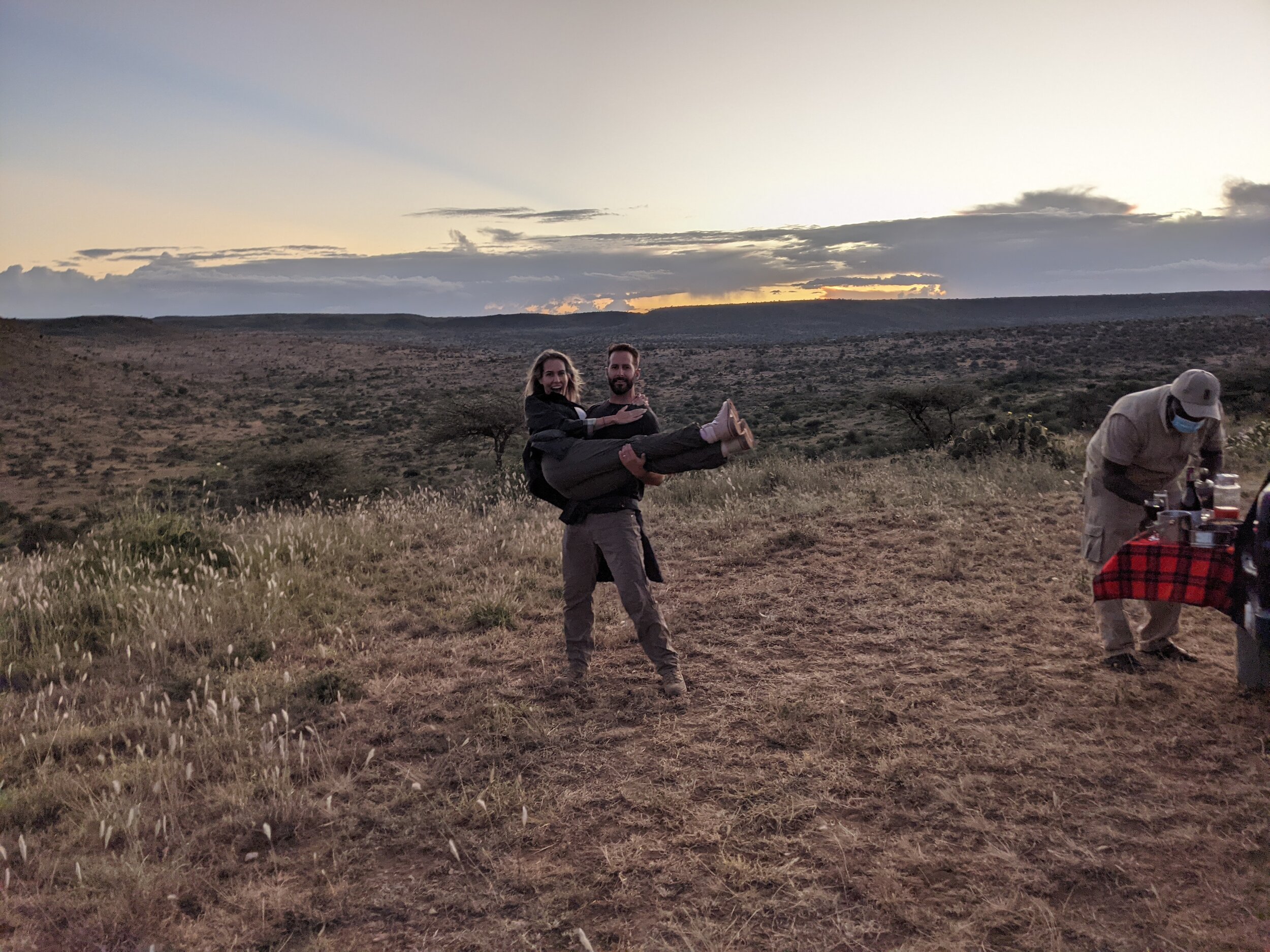
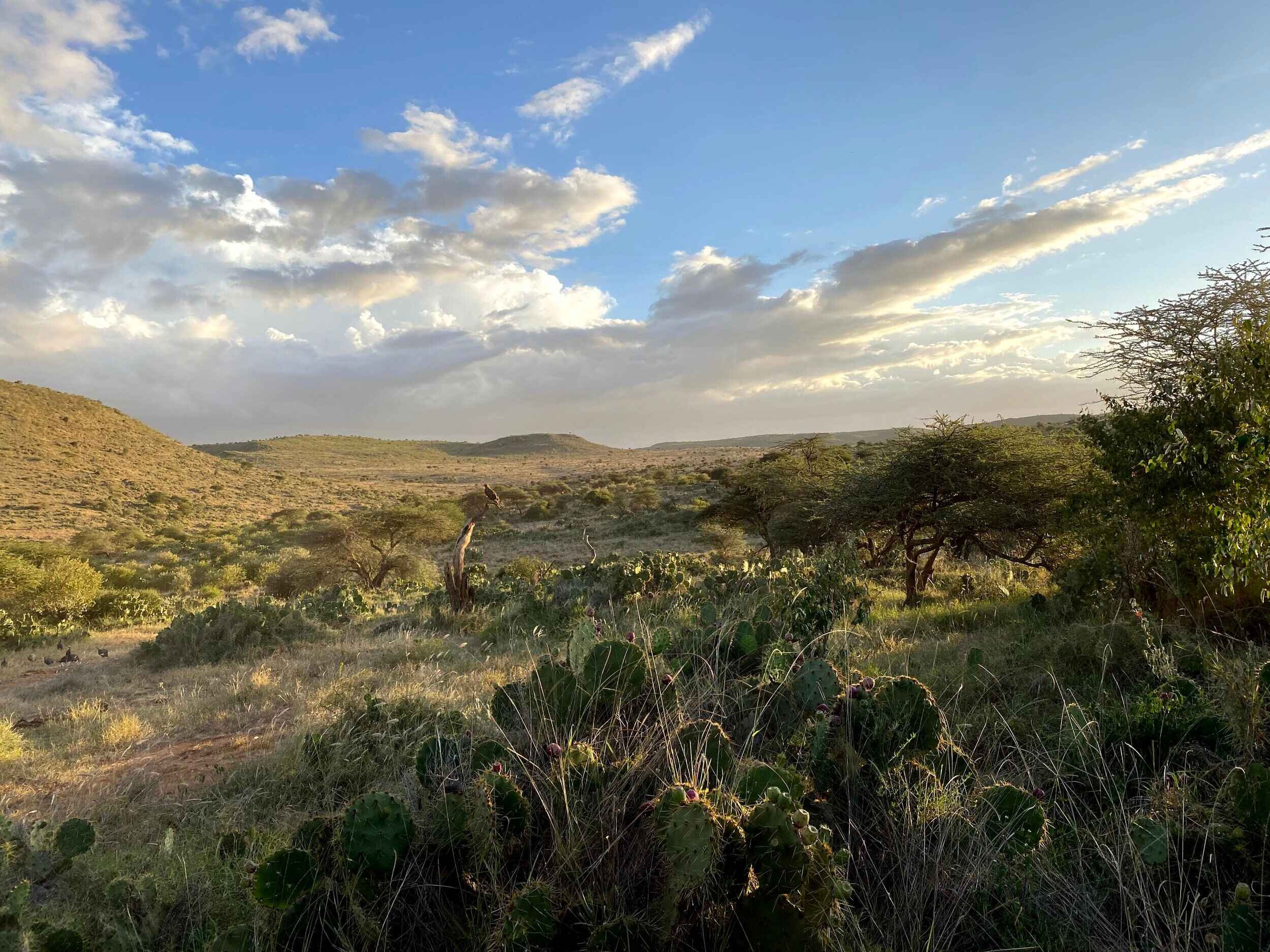
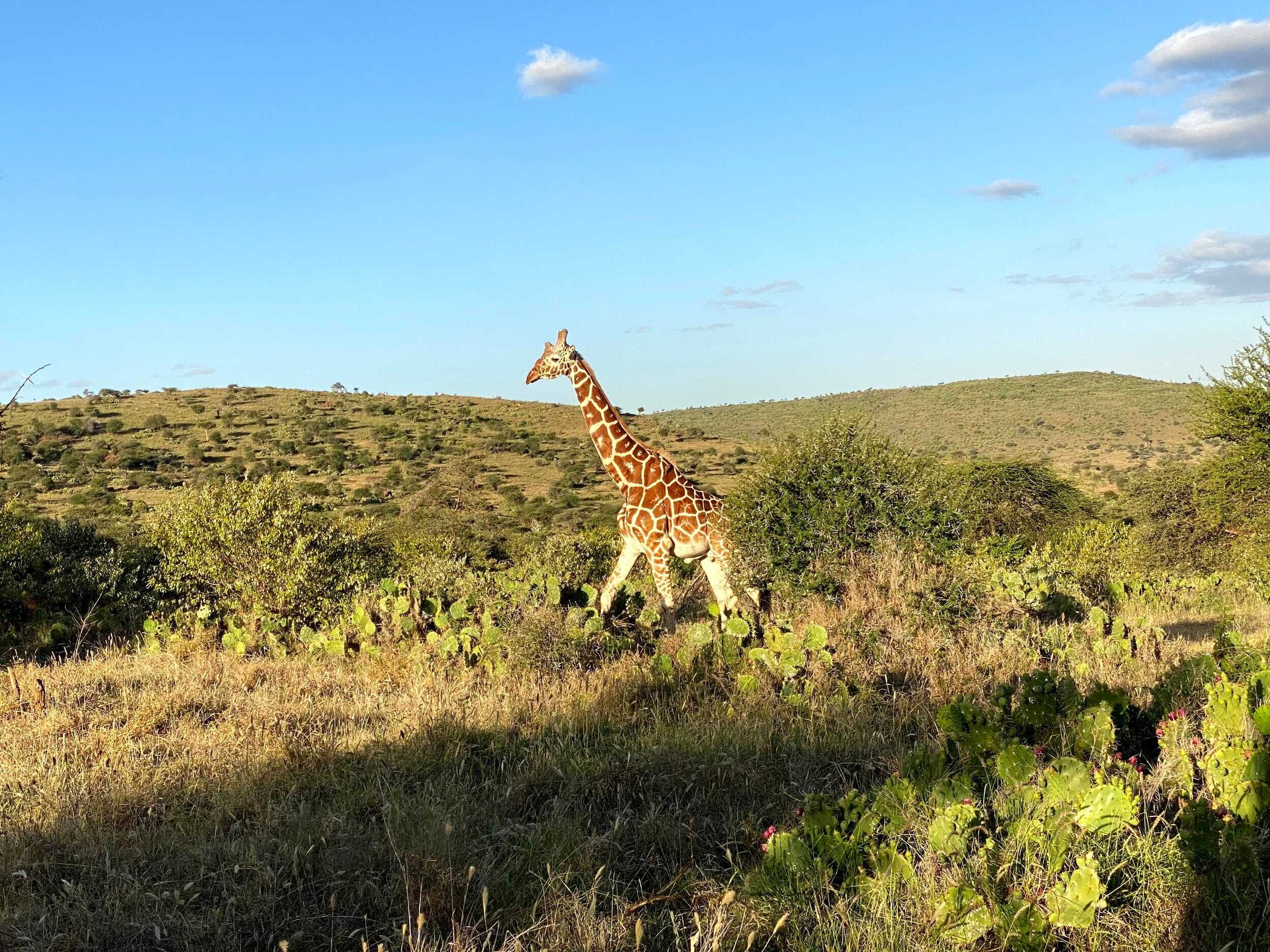
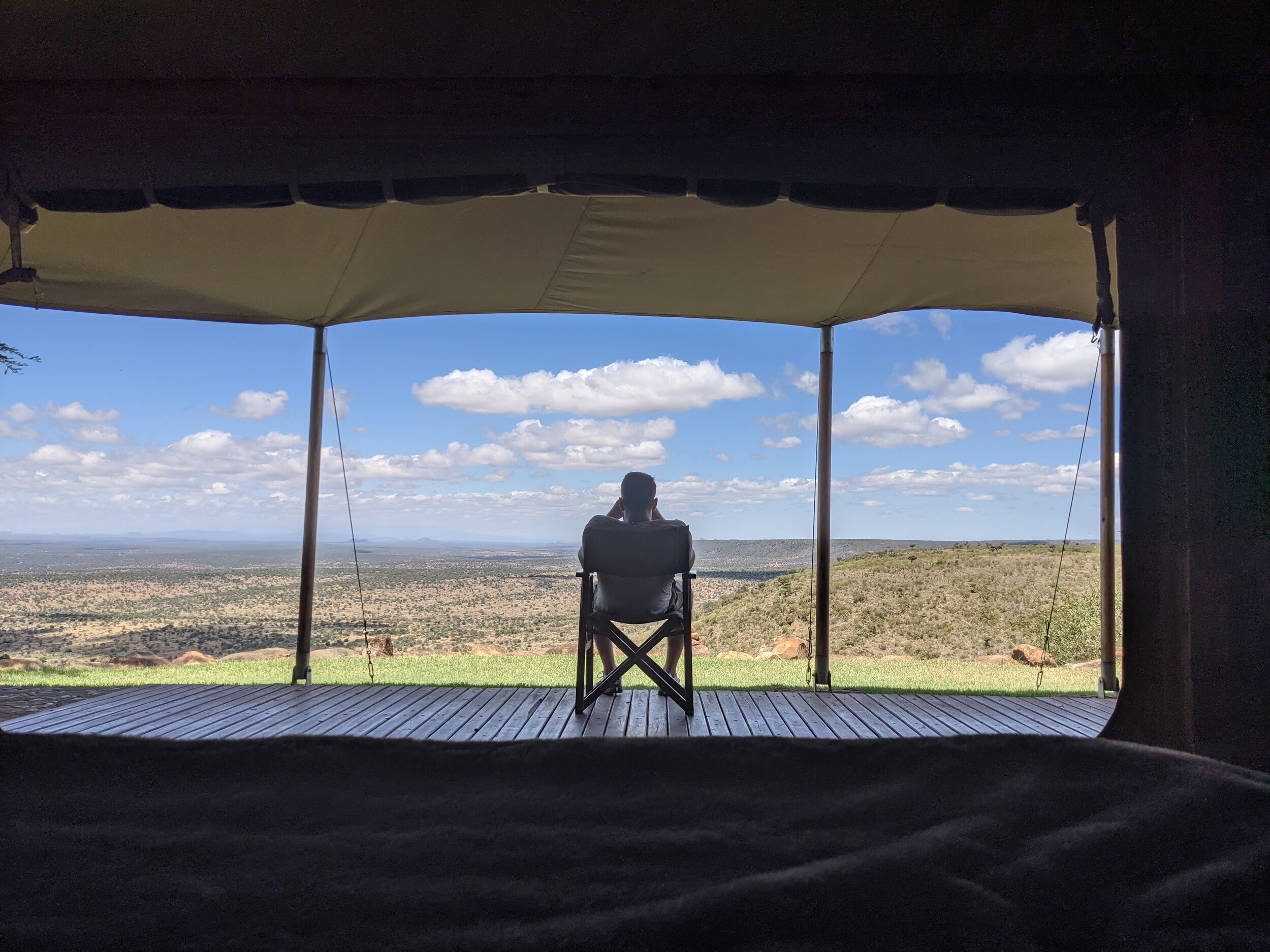

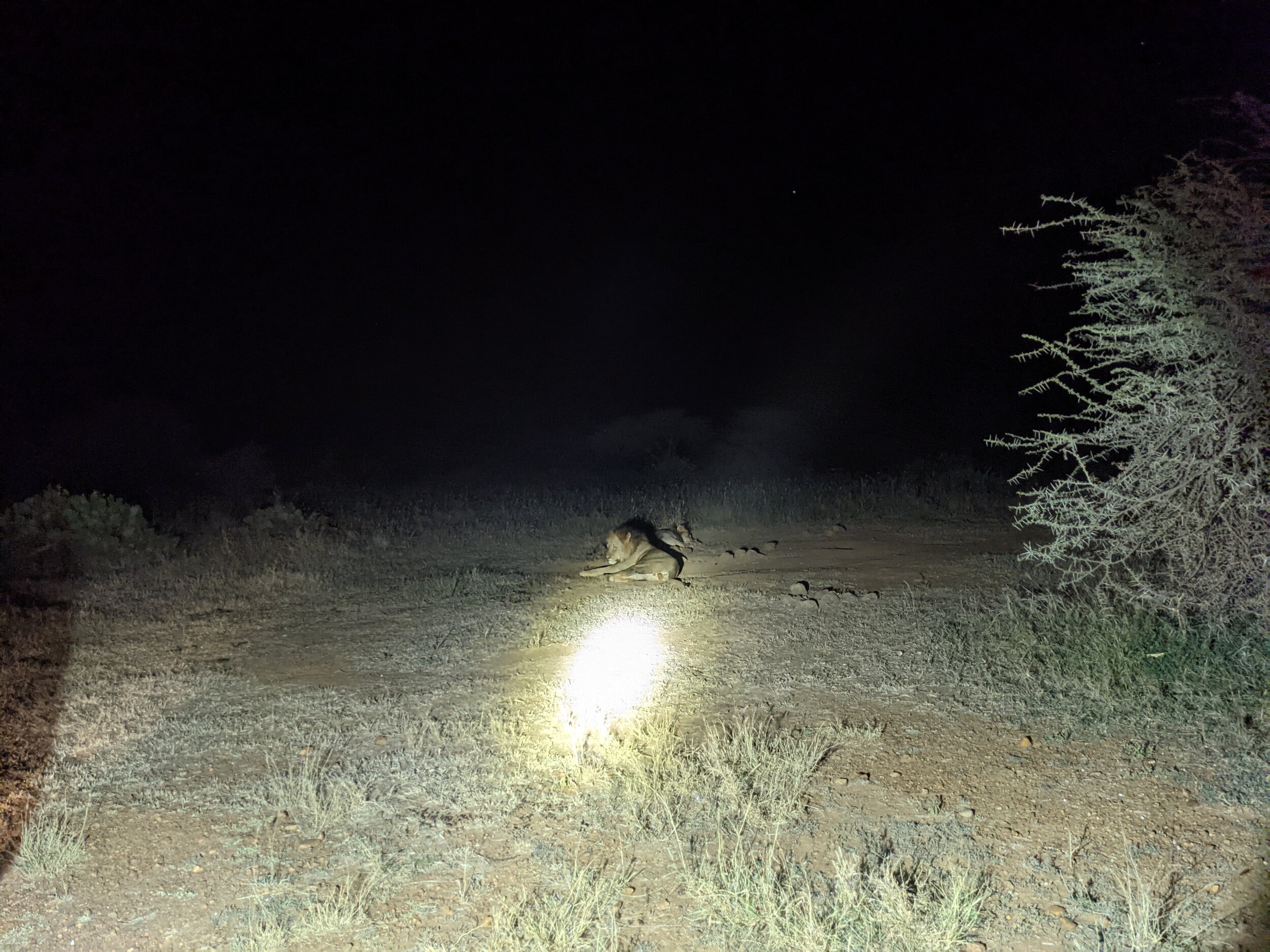
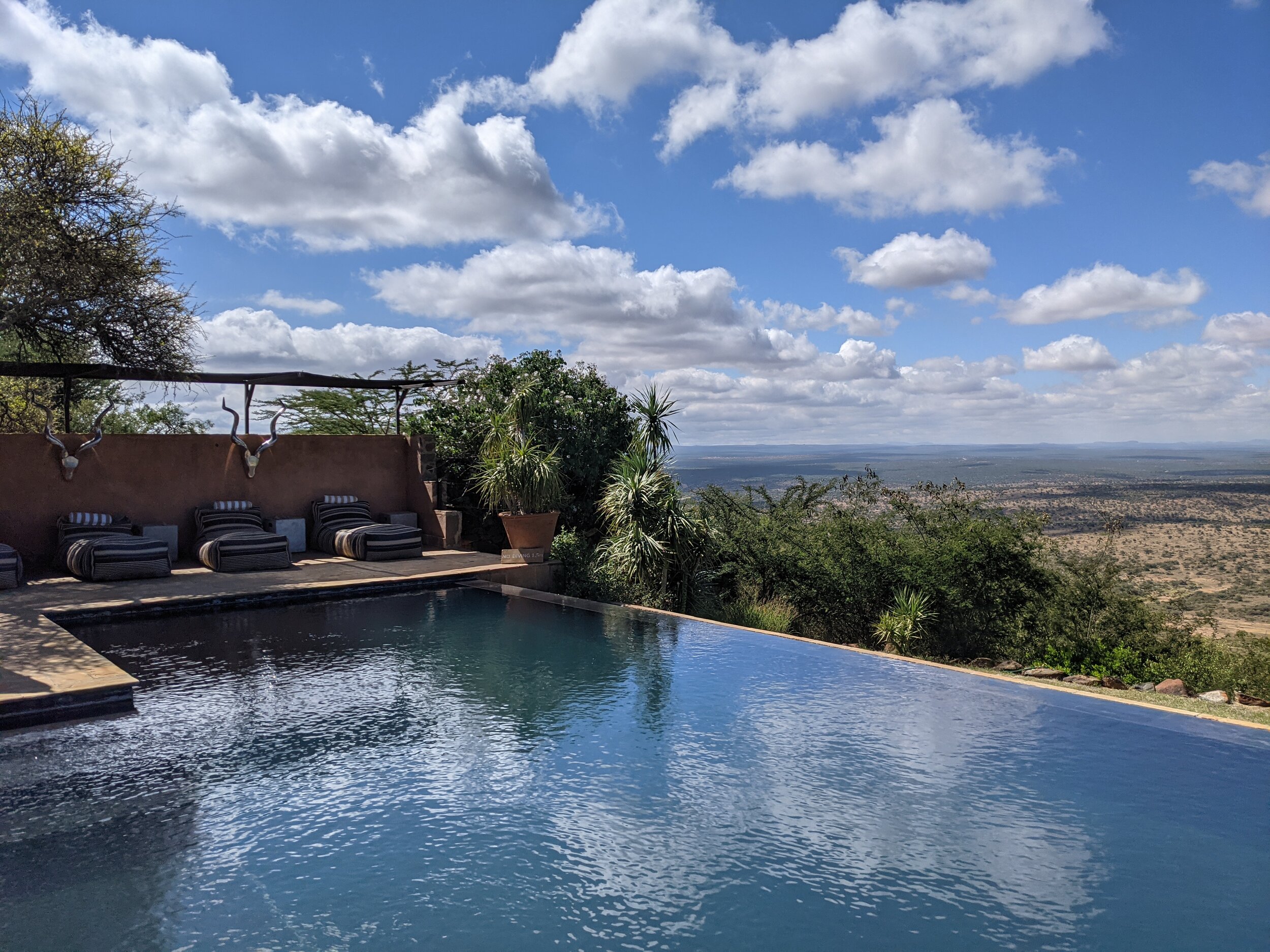
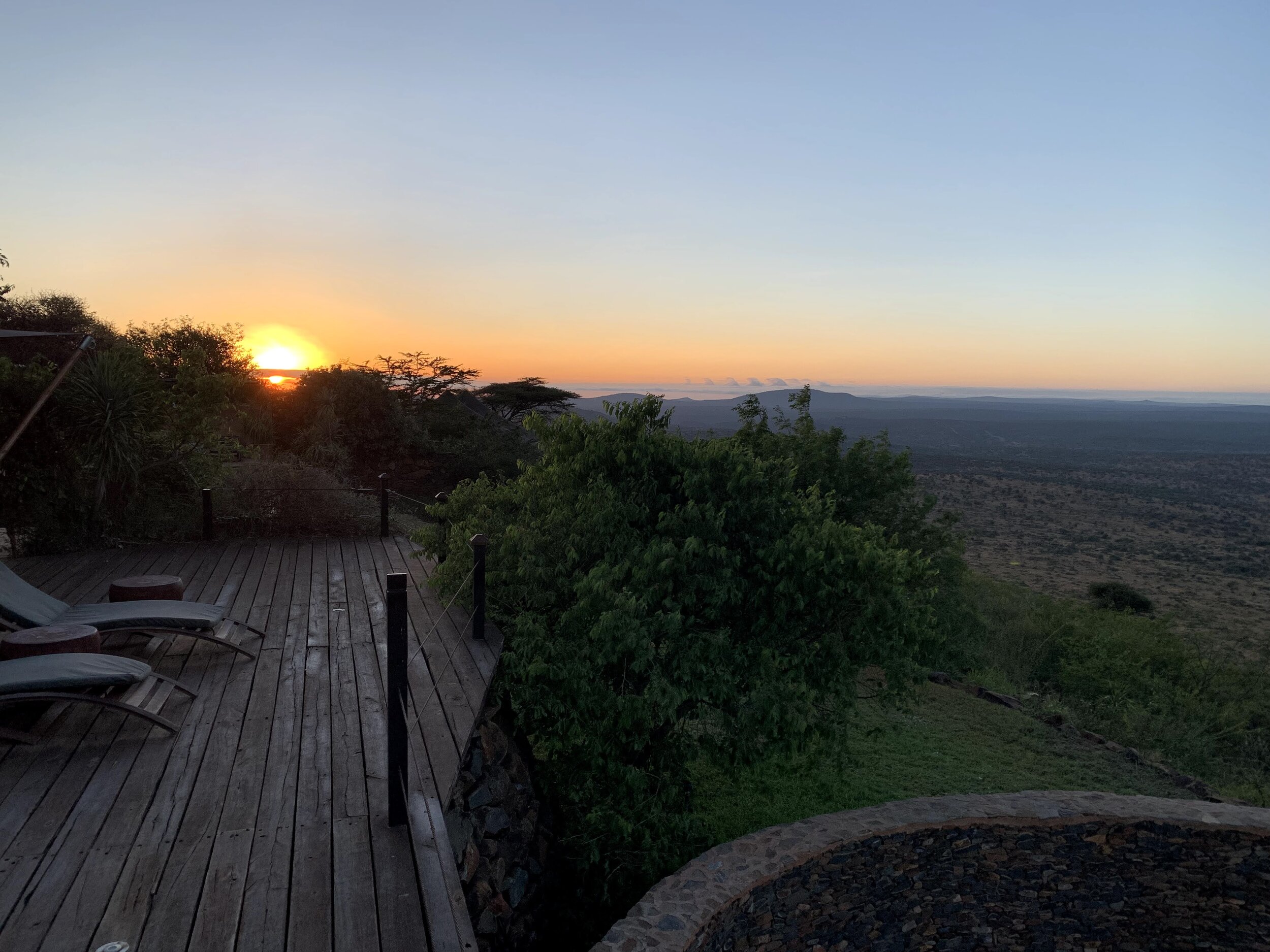


Masai Mara: Quintessential Safari in Style
We then flew an hour south to the Maasai Mara, descending onto the magnificent escarpment home to Angama Mara. Angama Mara is somewhat of a standard within the industry as far as luxury safari goes, perhaps most widely recognized for its dazzling and dramatic architecture compounded by the jaw dropping views afforded by its hilltop placement. It’s hard to arrive at Angama and not feel an overwhelming sense of amazement. Each tent has panoramic floor to ceiling glass windows overlooking the vast plains of the Mara Triangle and is flawlessly appointed both in terms of design and comfort.
The Mara Triangle is known as one of the most wildlife-dense regions in the world and a hotspot for the wildebeest migration from July through October. Regardless of the migration’s positioning however, game viewing here is phenomenal year round and our experience was no exception. Our drives with Robert, a young local Maasai with an infectious zest for wildlife, were some of the most exciting I’ve ever been on. We found various prides of lion (one of which was feeding on a zebra kill), a pack of hyena and a black rhino mother and baby, not to mention countless elephant and giraffe roaming the planes and hippos and crocodiles camped out at the Mara River as a handful of zebra began to scout out the path for the migration soon to come. Angama is known for its photography lab and Robert was equipped with one of the camp’s professional cameras, allowing him to take incredible photos of both the wildlife and our group (see below!). We had the distinct privilege of being joined by a second guide, Nissa, visiting Angama as part of an exchange program from the Borana Conservancy in northern Kenya (not too far from Loisaba). The luxury of having our own vehicle with these two expert guides was invaluable.
On a personal level, we will never forget Angama as it was the site for our dear friends’ small wedding at which the only guests were my husband, myself and a group of local Maasai who celebrated the occasion with traditional song and dance. The event was made even more unique by an unexpected downpour of rain, considered a blessing by the Maasai. A subsequent intimate dinner by the fire made for the perfect ending to the special day.
As you can see below in some of the photos from the big day, taken by Angama Mara’s in-house photographer Adam Bannister, it’s hard to imagine a more breathtaking backdrop for a wedding! Donald and I were having major FOMO.
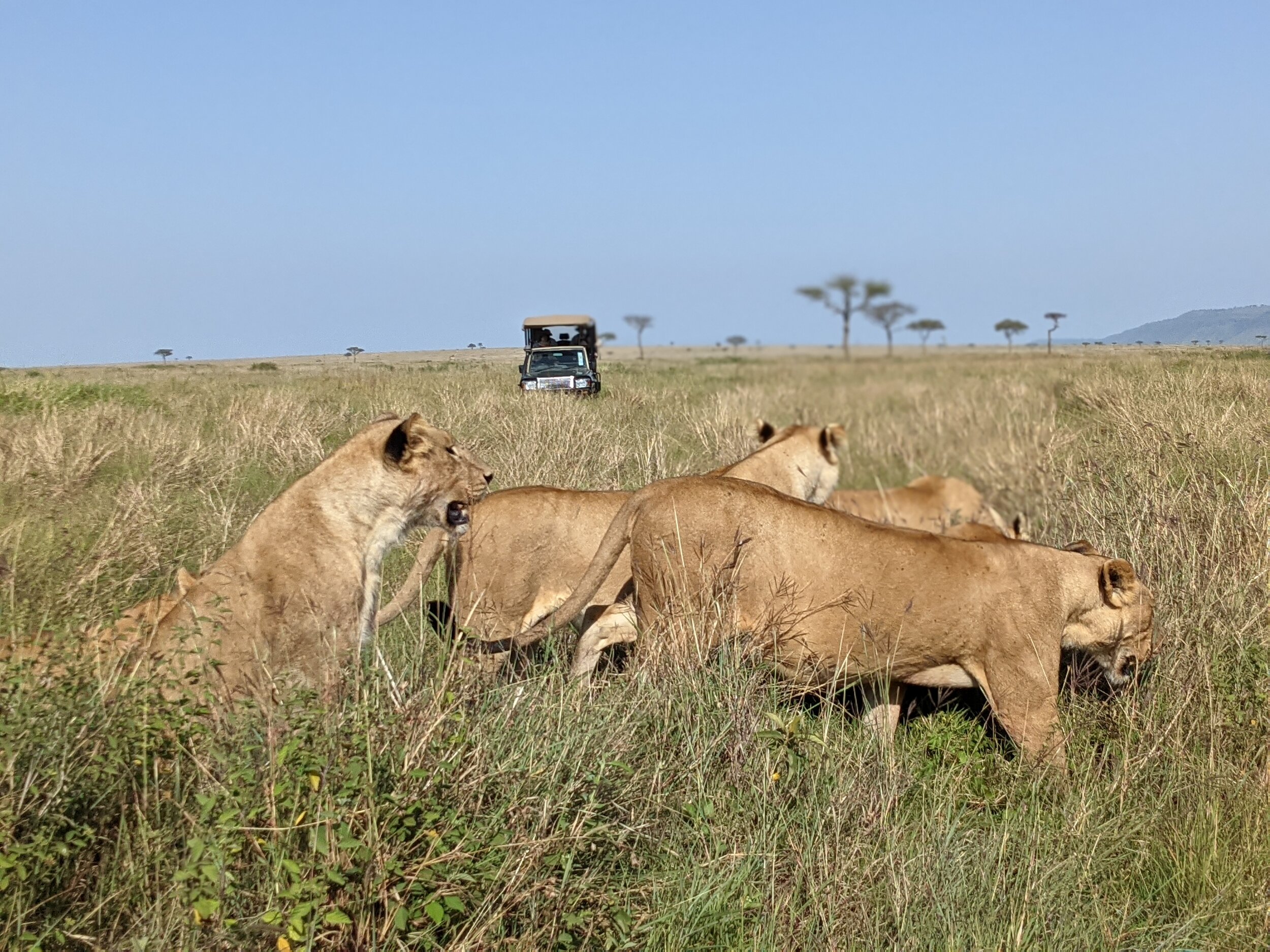
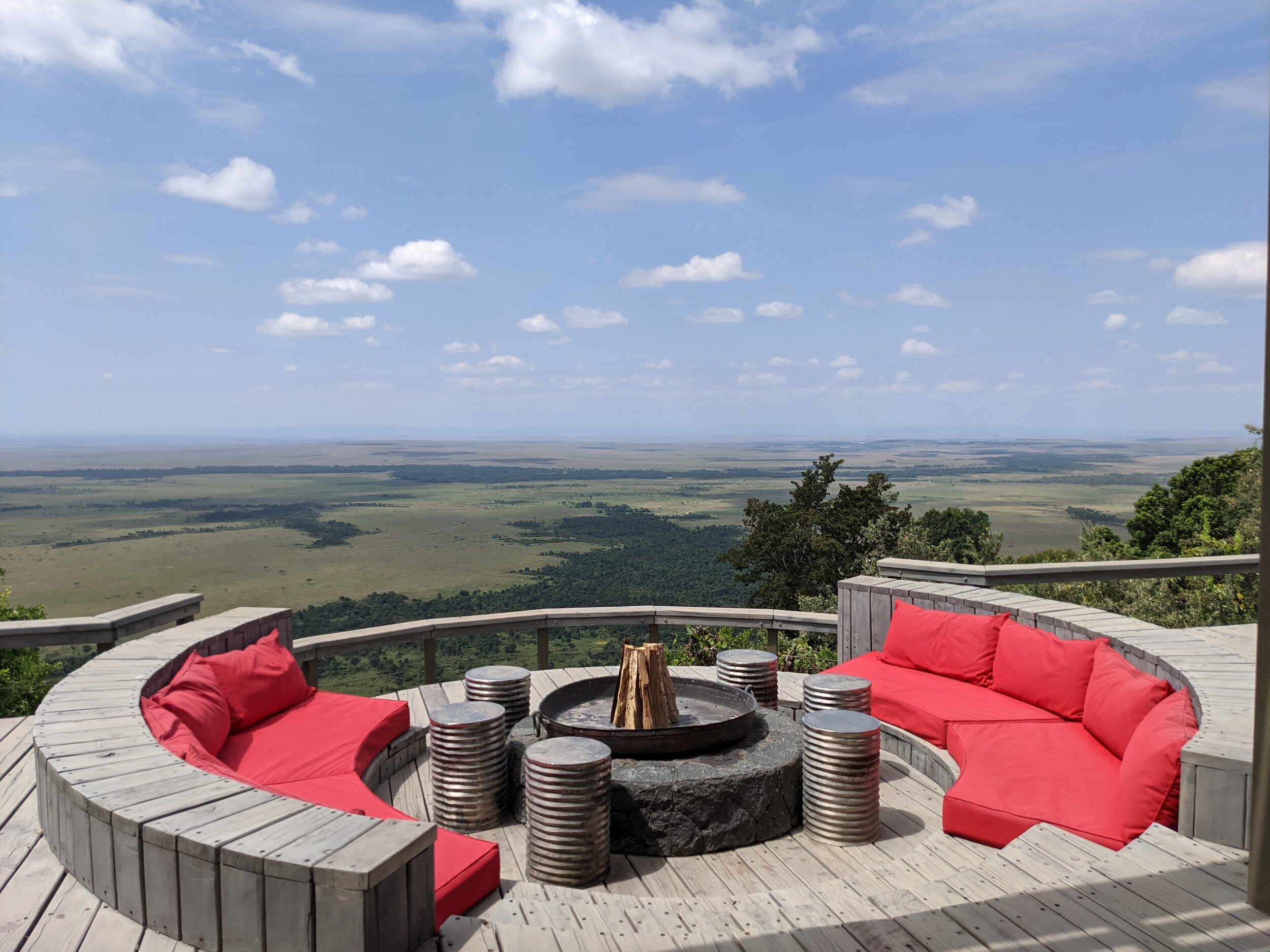
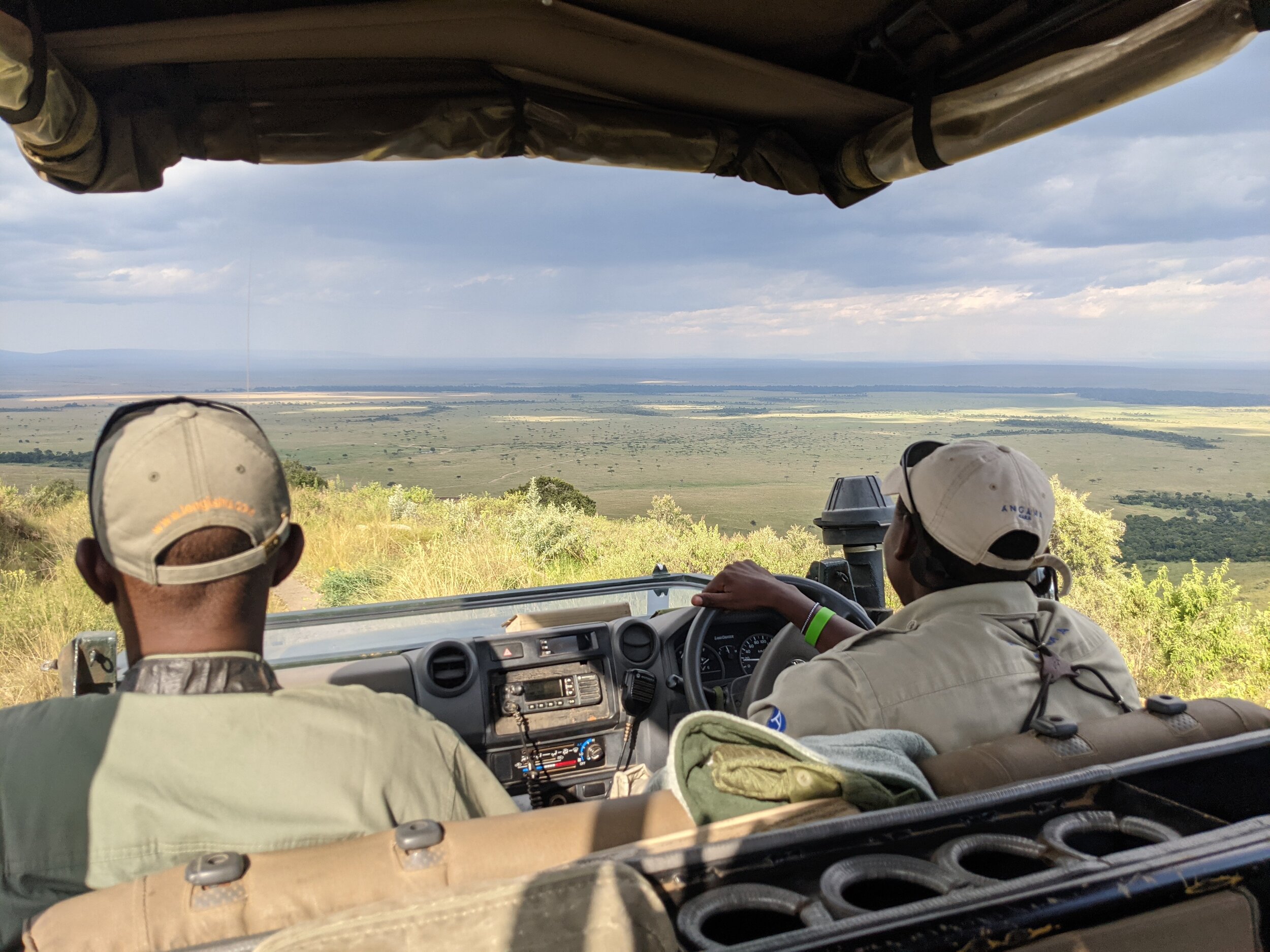

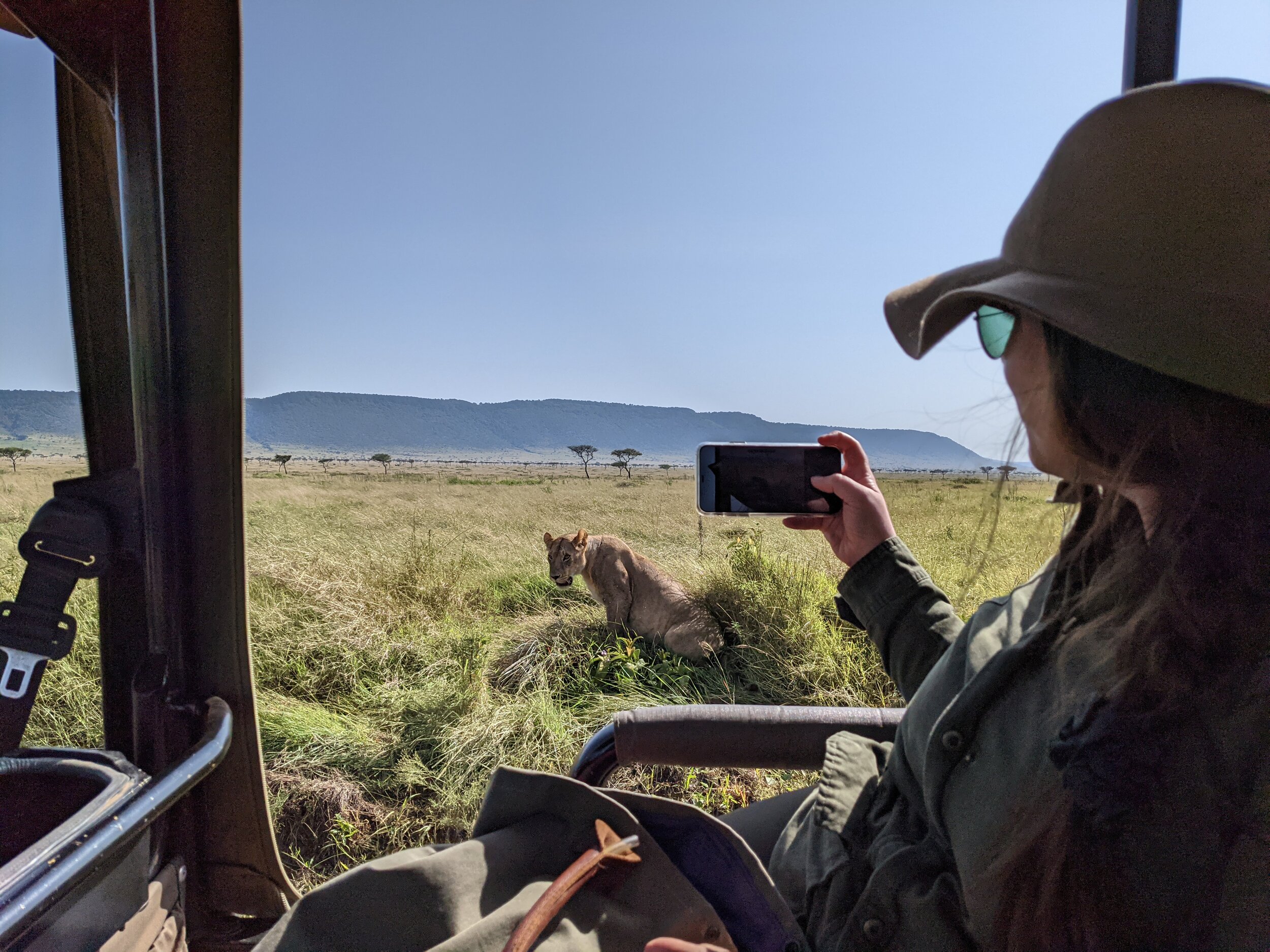
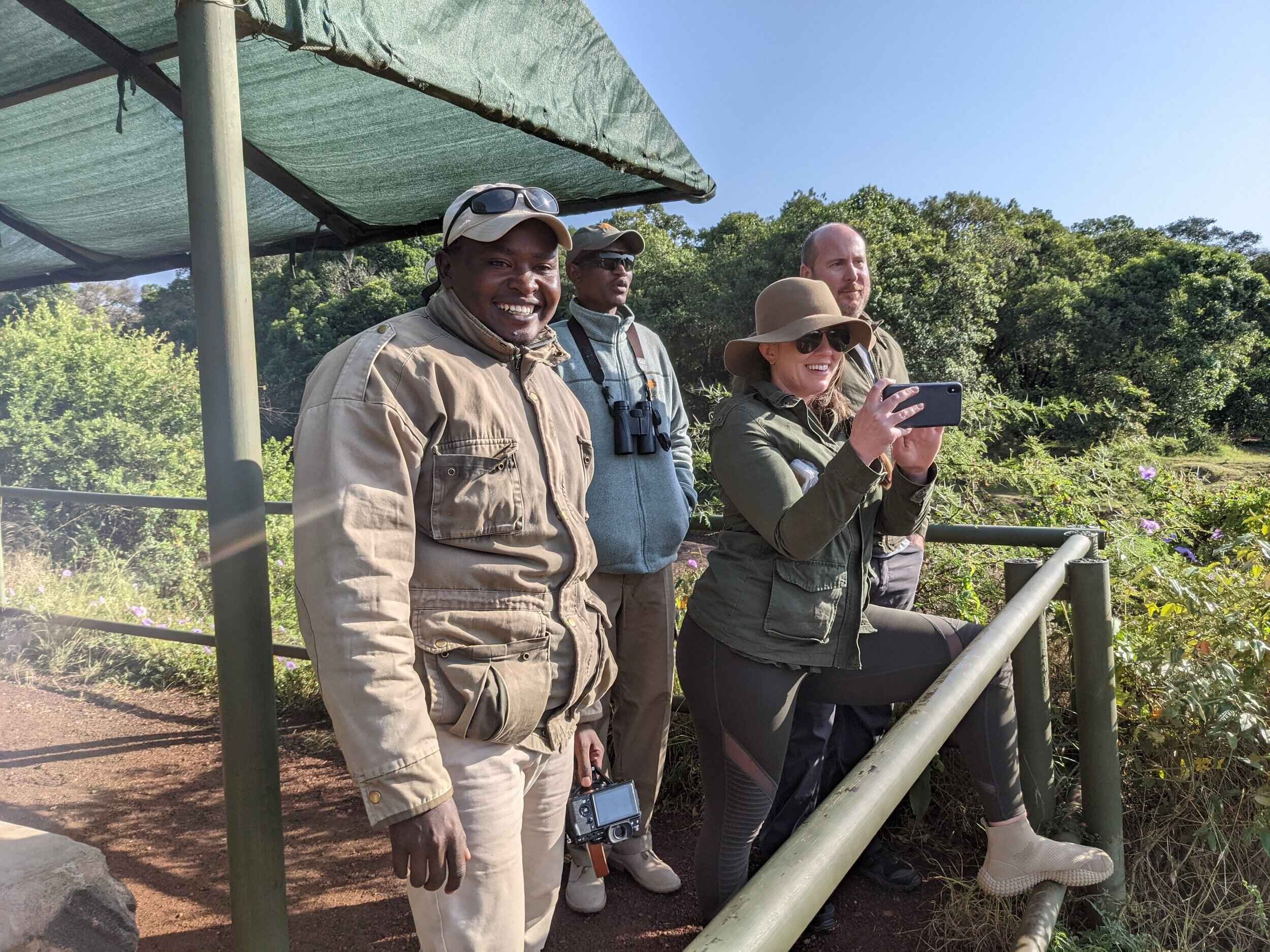

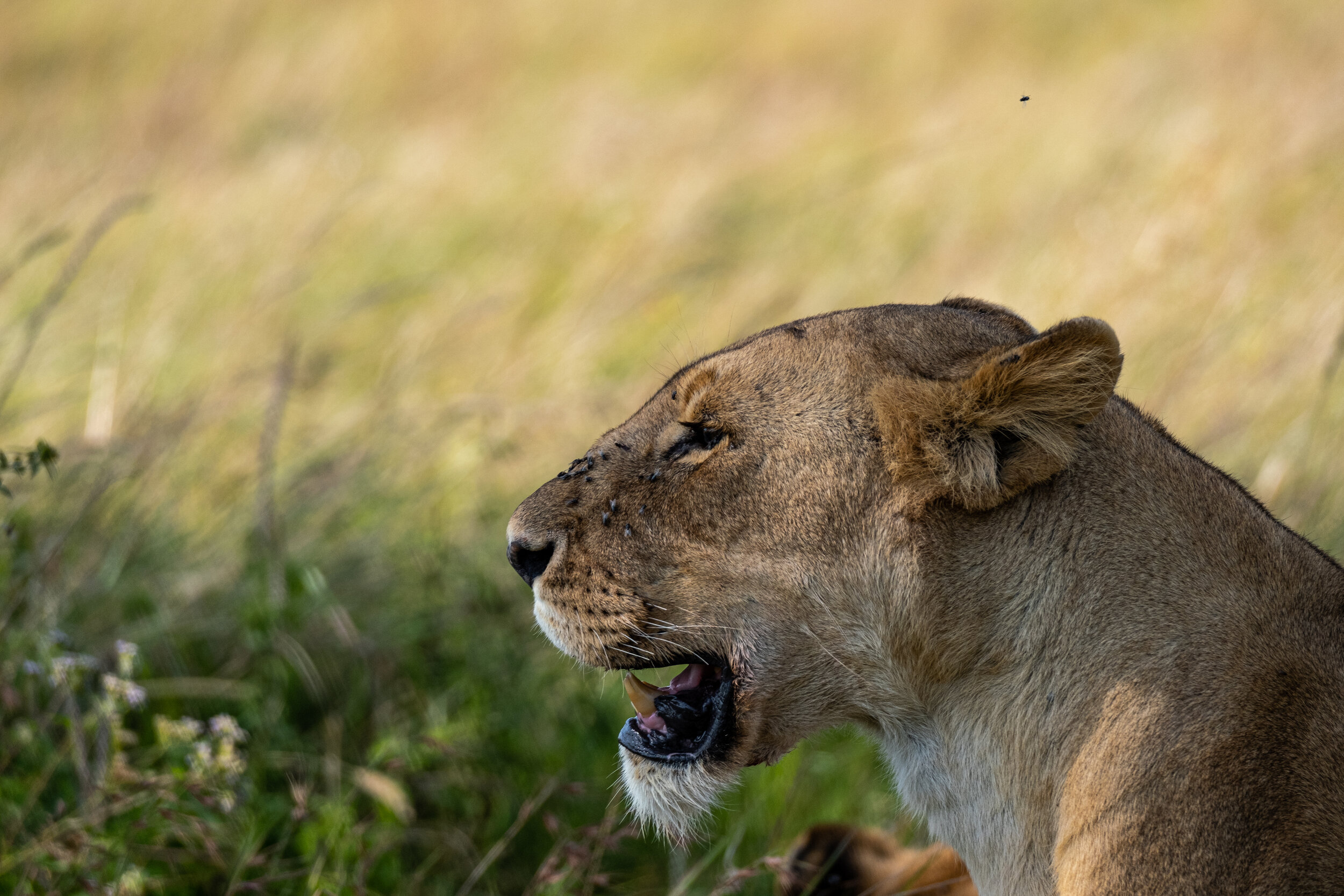
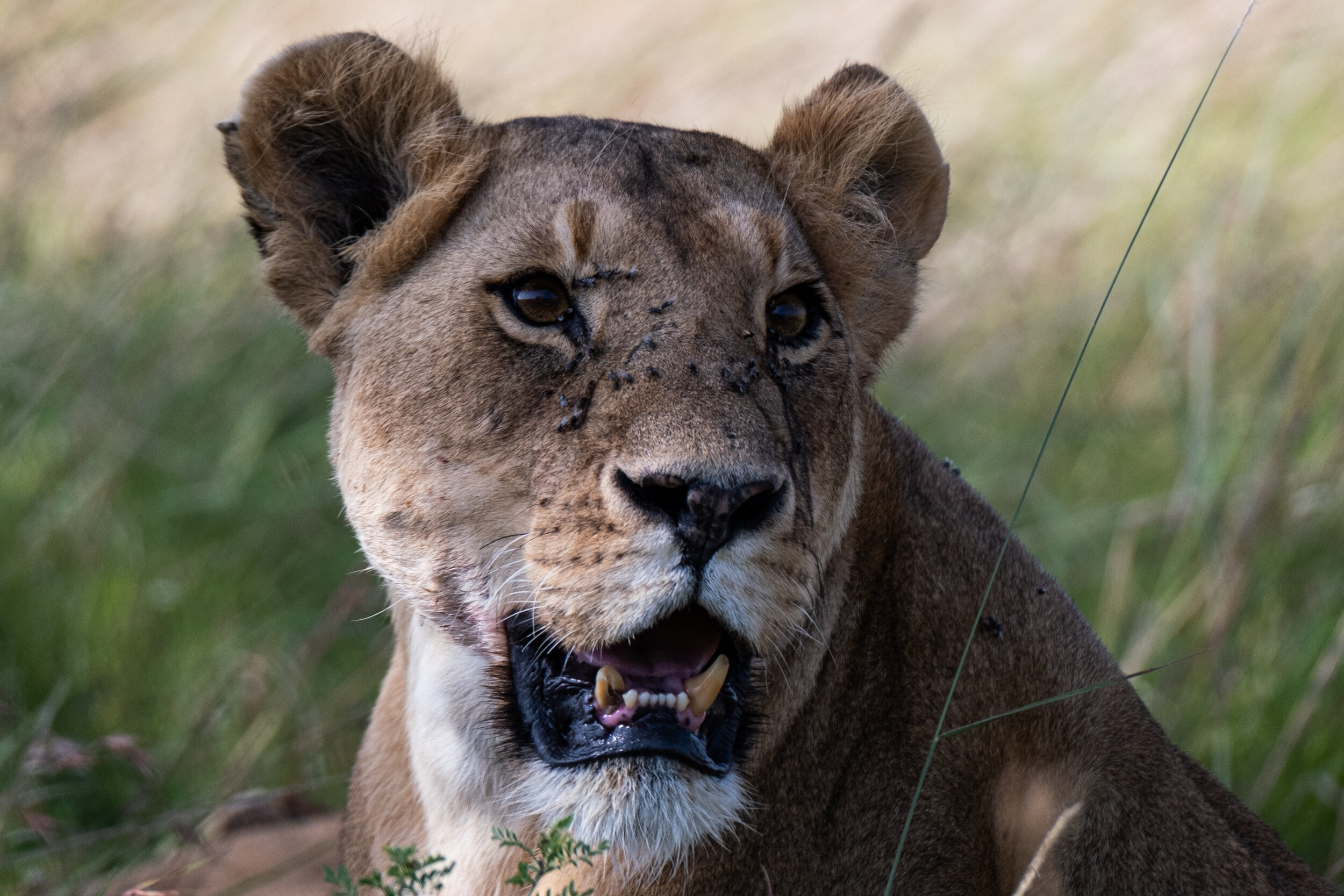


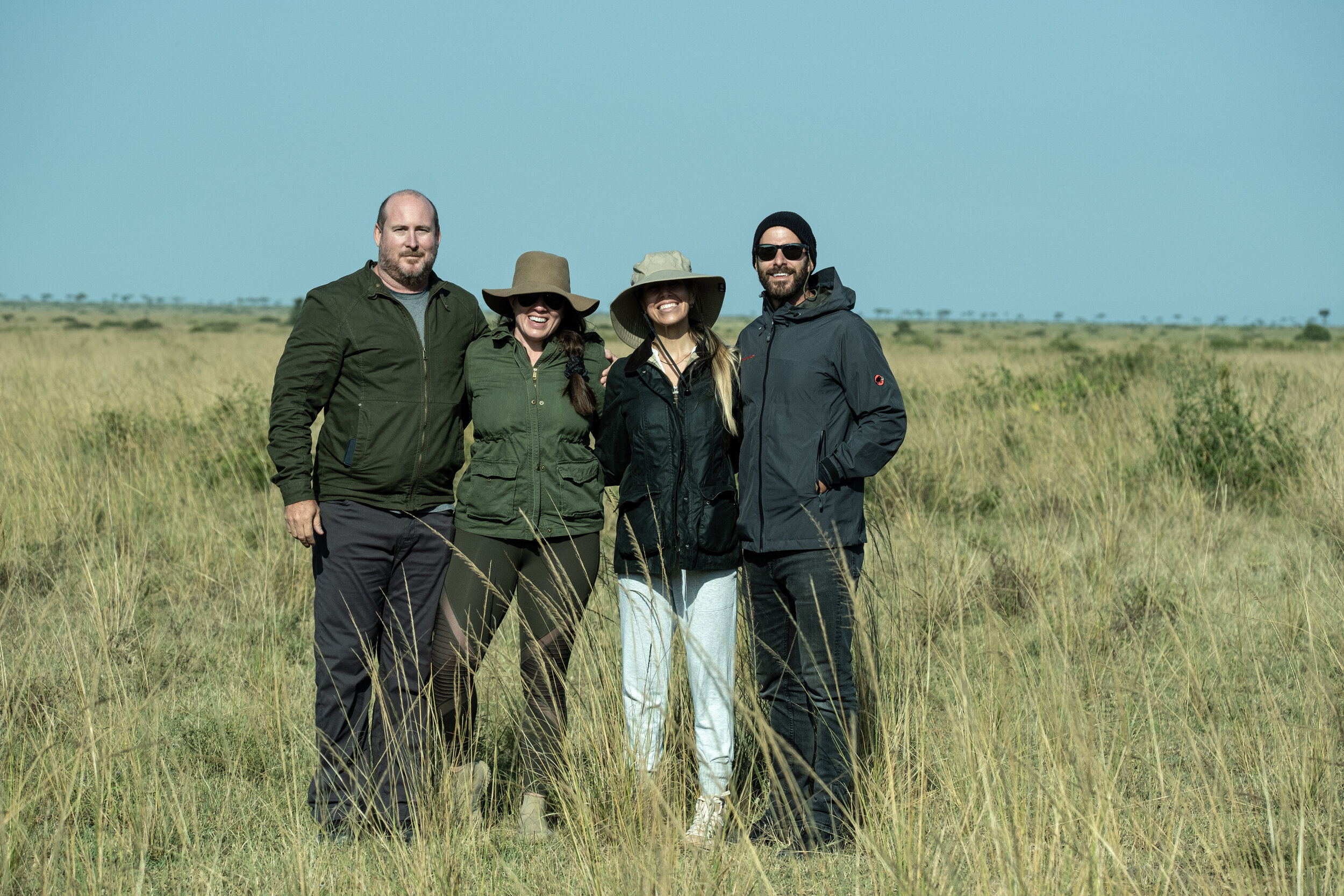
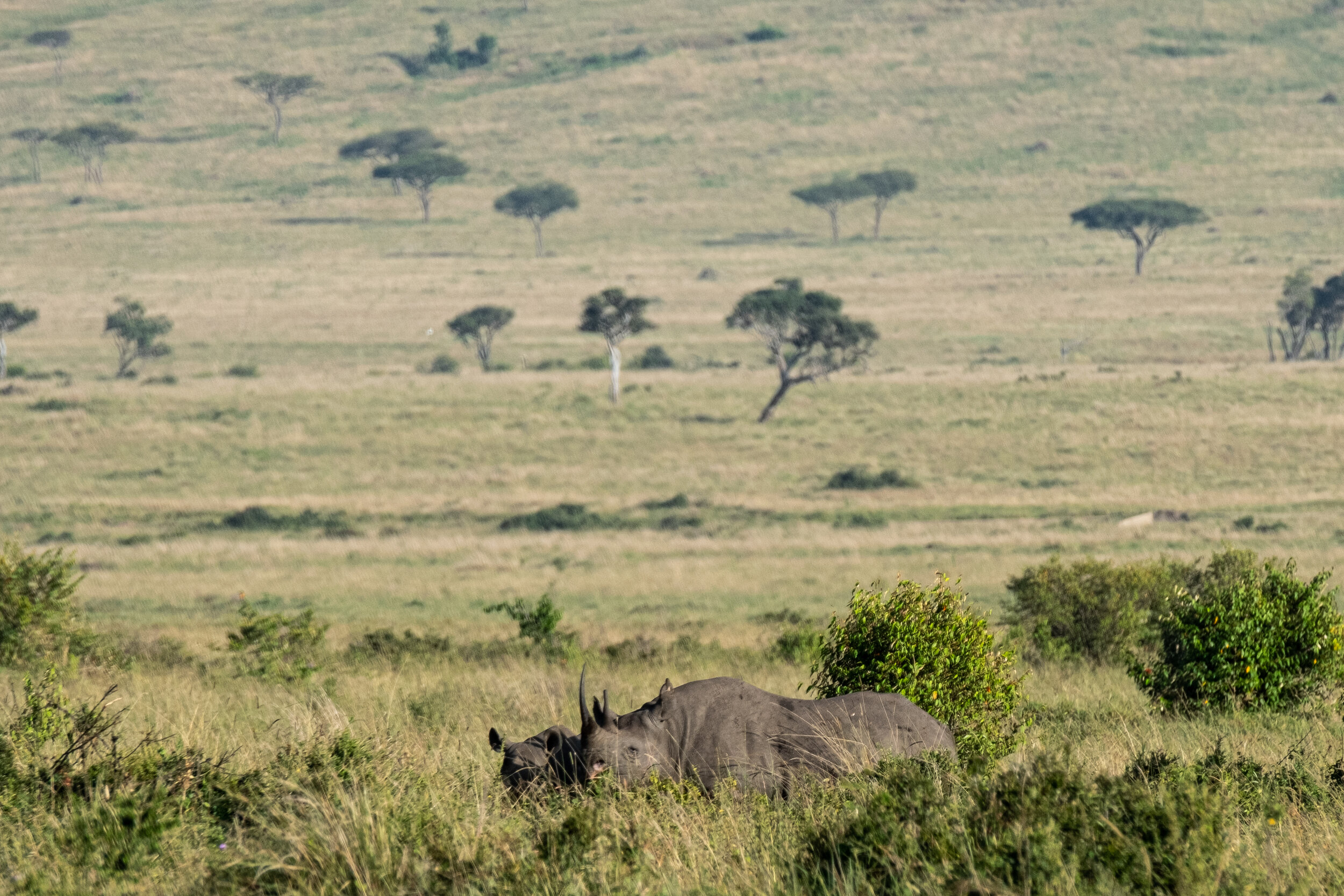
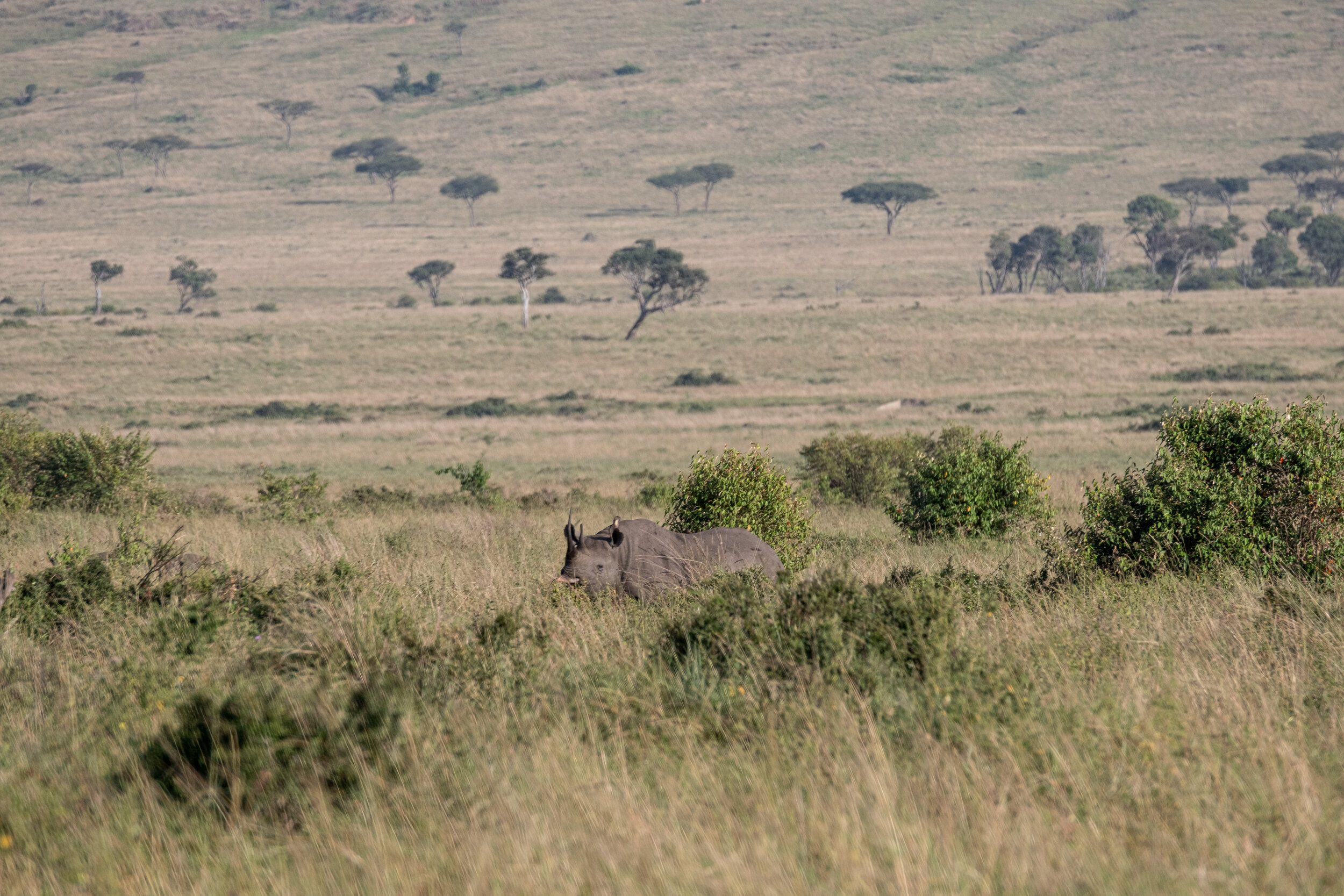
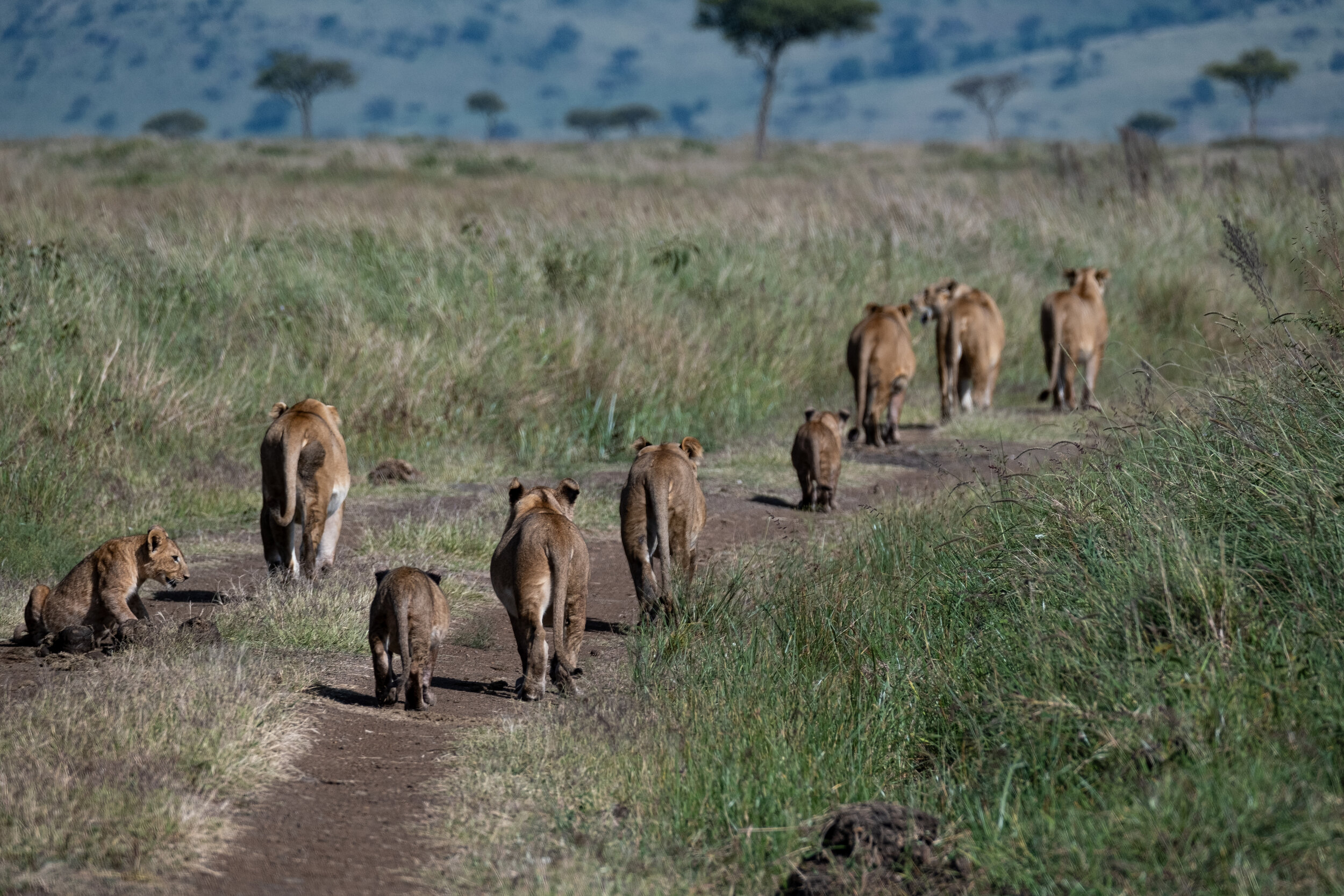
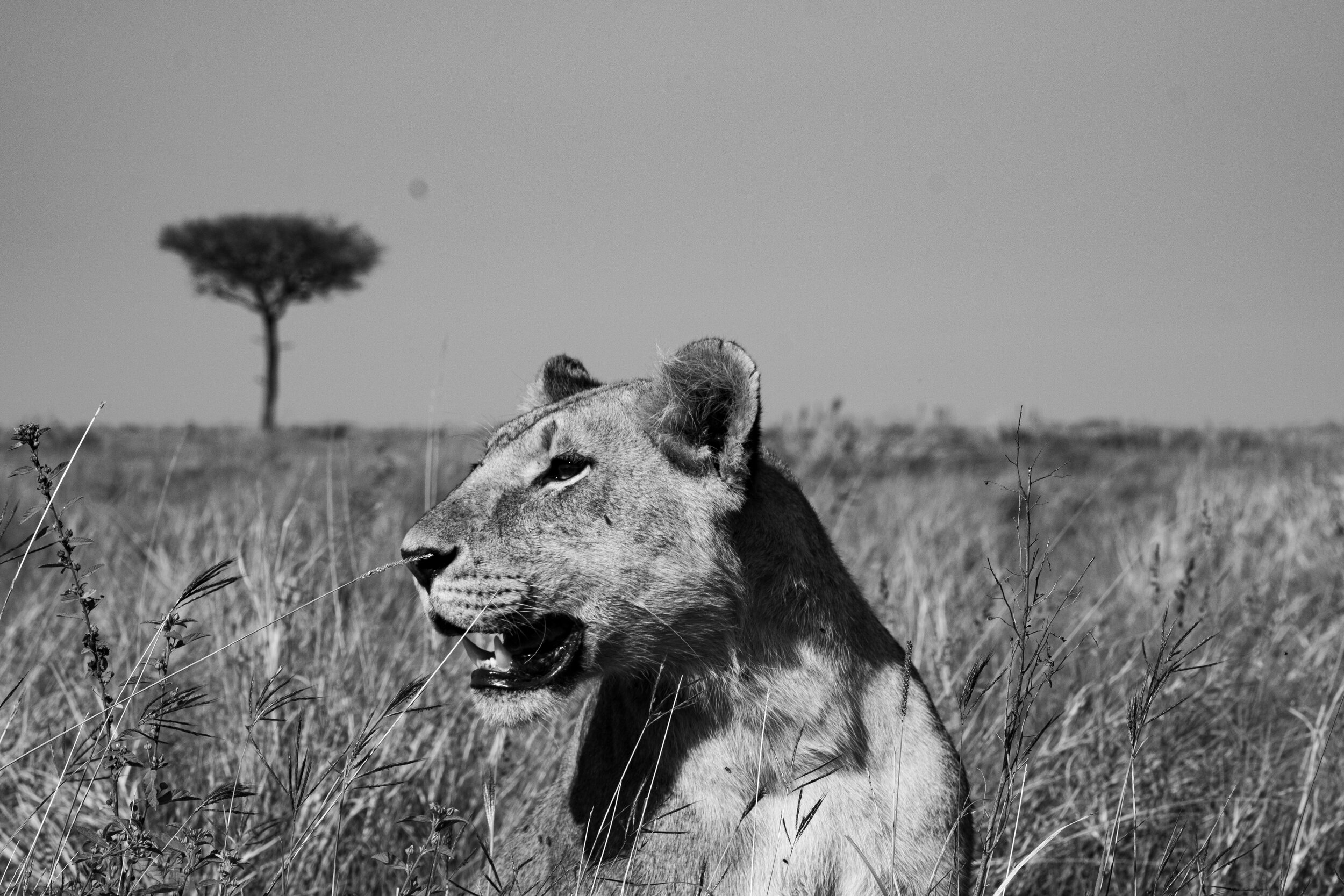
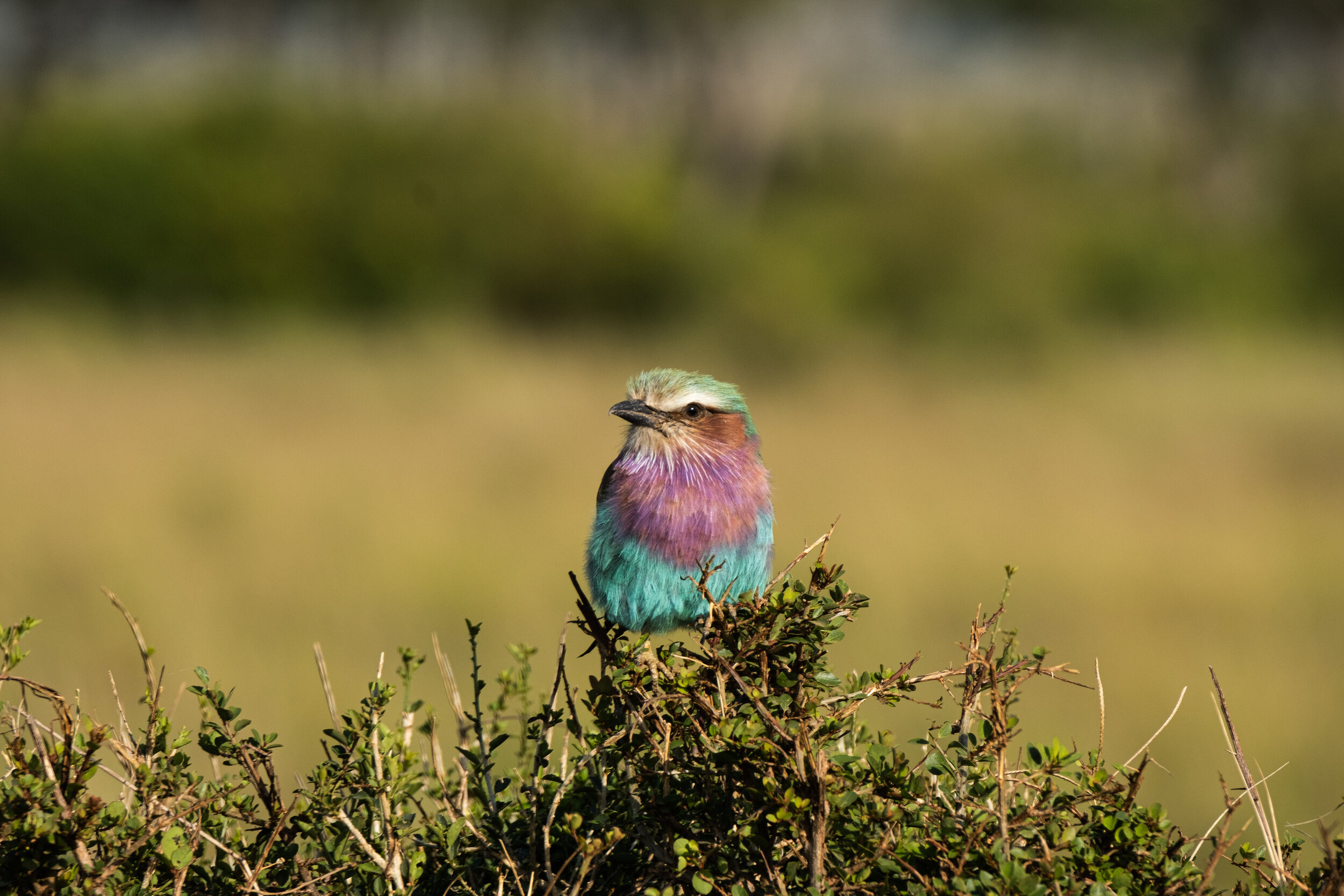
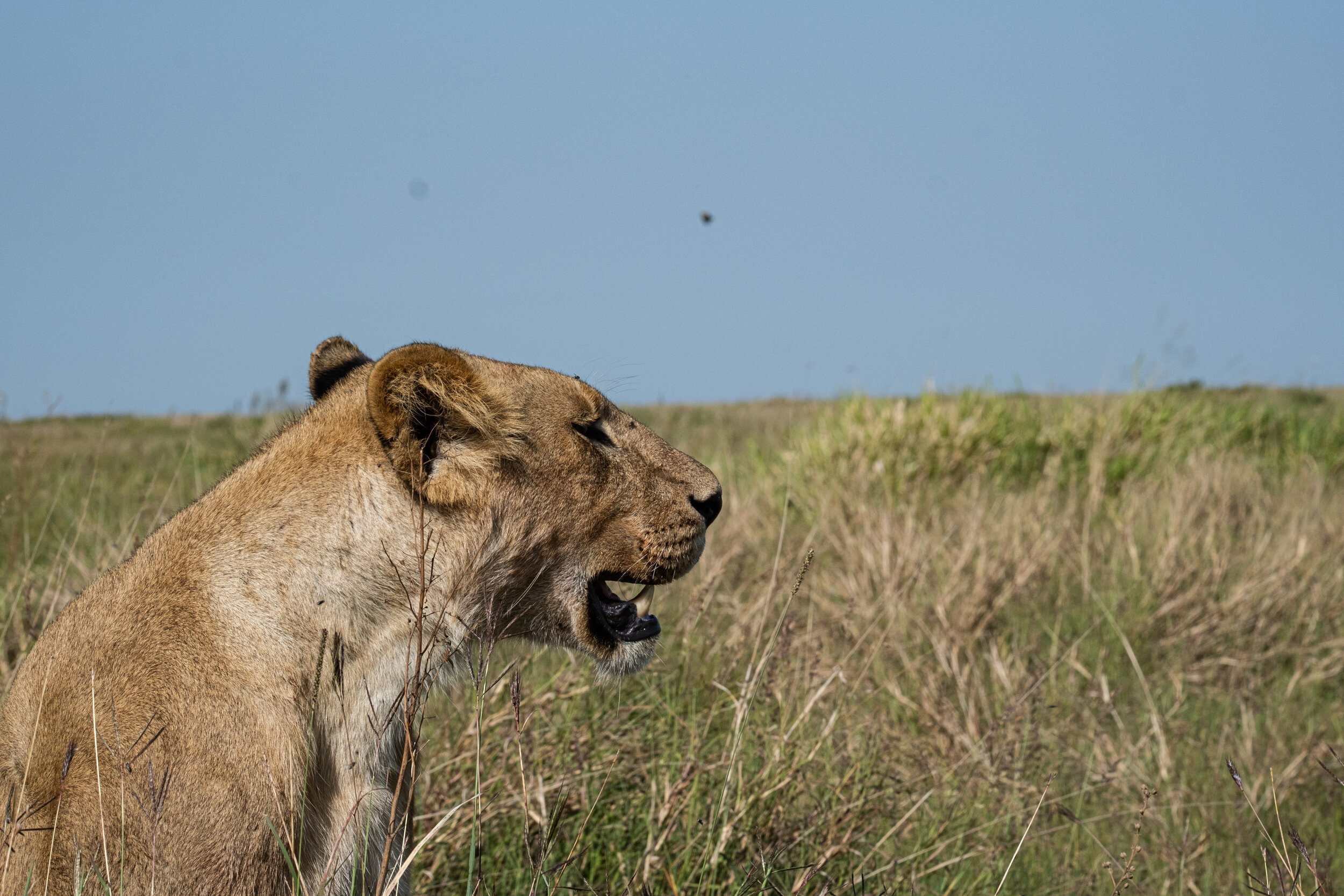
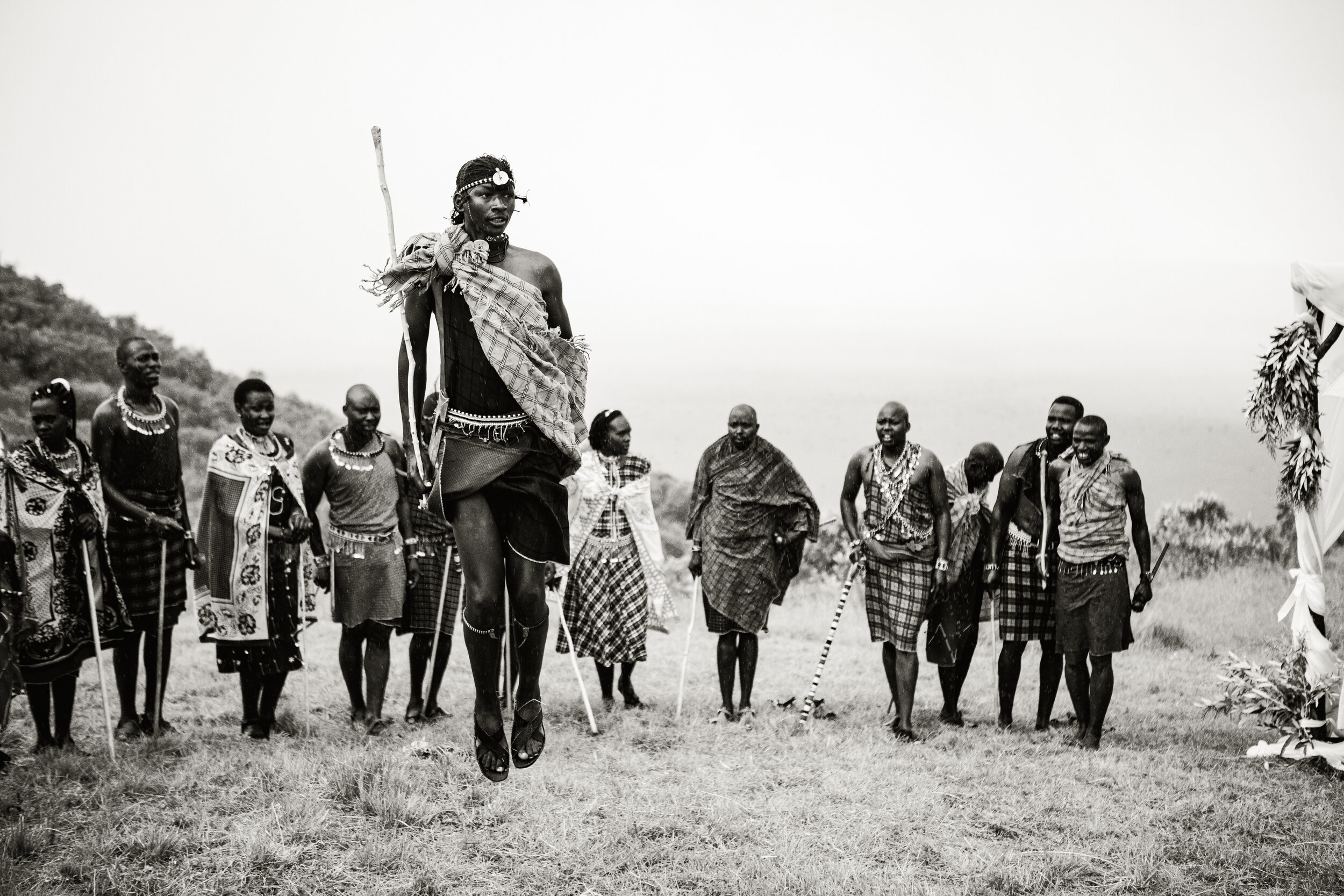
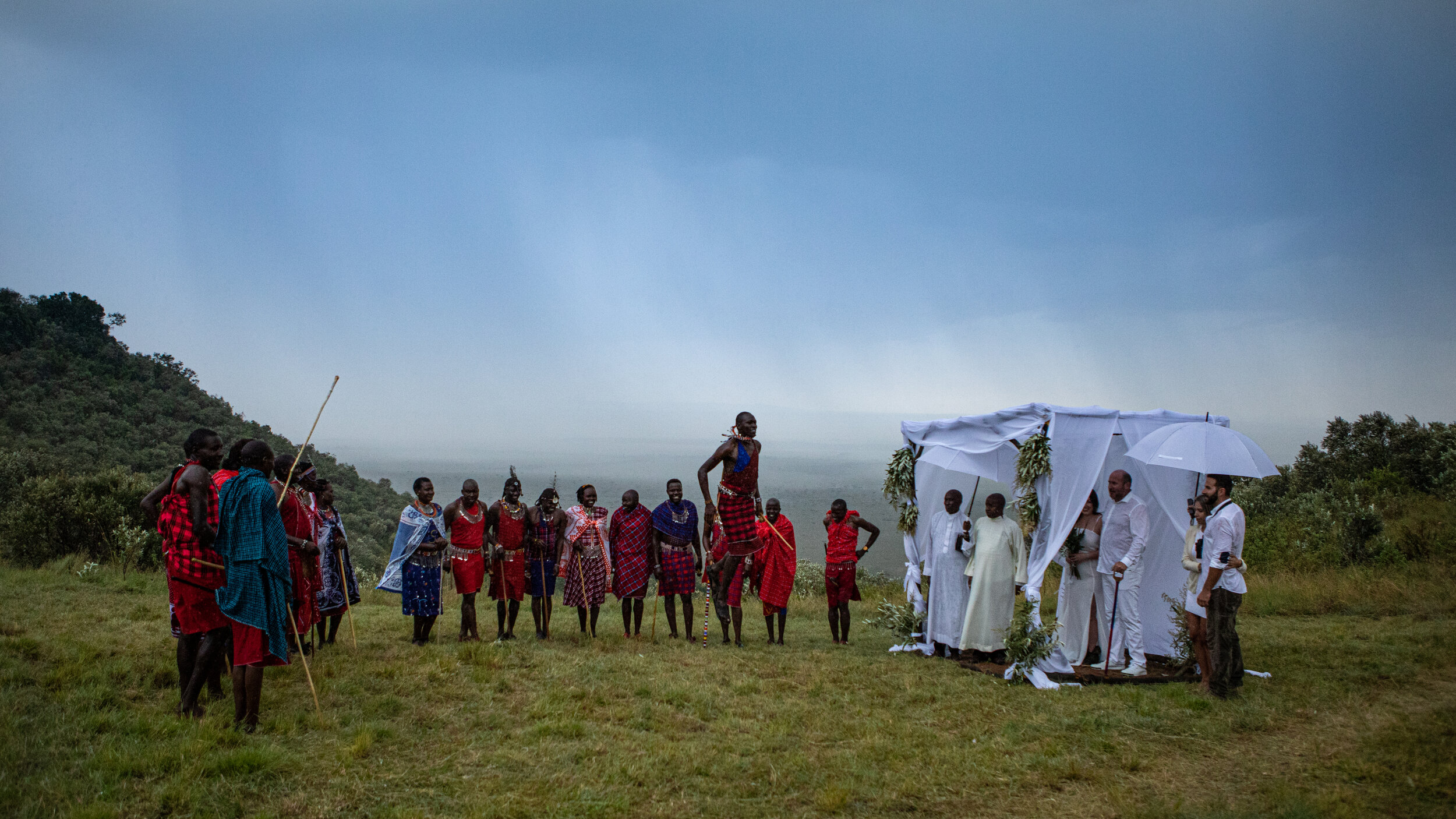
Ngorongoro: Breathtaking from Top (Highlands) to Bottom (Crater)
We then bade farewell to Kenya and set off for Tanzania. The day was rather long with a couple of flights and about six hours of travel from door to door. This can be avoided however with a private charter or an overnight in Nairobi. The payoff however was worth it as we arrived to the Lake Manyara airstrip in Tanzania, the primary entry point for those visiting the Ngorongoro Crater, and were greeted by our veteran guide Toti. We made the 45 minute drive to Gibb’s Farm, another client favorite nestled into the verdant hills of a working plantation in the Ngorongoro Highlands. While the views were completely different from those at Angama, the impact is the same; as you arrive to Gibb’s Farm you are immediately struck with the immense natural beauty of the locale and with a visceral sensation that you never want to leave. The garden cottages are the definition of cozy, with stone fireplaces, oversized bathtubs and African-inspired farmhouse decor. Our particular cottage was called “Shamba”, the Swahili word for vegetable garden that our room overlooked.
The next morning we left with Toti for the Ngorongoro Crater. The entrance is a 45 minutes’ drive from Gibb’s, with another hour or so down to the crater floor. The views from the rim and the subsequent descent to the floor are breathtaking. Even if you didn’t find a single animal within the Crater, the sheer magnificence of the topography is reason enough to visit. Fortunately however wildlife within Ngorongoro is consistently prolific, particularly within the dry season months from late June through October, and then again in January and February. One major benefit of pandemic-era travel to East Africa is the reduction in crowds. We only saw about 20 vehicles throughout the day inside the Crater, the majority of which were when we parked at a designated picnic site for lunch. Being able to roam the roads of the Crater without traffic was an incredible privilege, as was being accompanied by Toti, a passionate expert who was actually born in the Ngorongoro Conservation area where many of his Maasai family members still reside.
After a long day in the Crater we were delighted to return to the peaceful setting at Gibb’s Farm where we enjoyed yet another exceptional dinner with warm and attentive staff. As Miami residents, we loved the cold nights in the Highlands and the comfort that the blazing fireplace and hot water bottles placed in our beds provided. The next morning Melkiory, a young member of the Gibb’s staff studying to be a guide, took us out for an incredible hike through the property. We visited elephant caves and waterfalls that I never would have expected to be found on this lush working farm.
Many clients often ask when visiting Ngorongoro Crater whether they should stay within the national park like andBeyond Crater Lodge or at a property like Gibb’s Farms in the highlands. My advice would be that it really depends upon personal preference, budget and the style of your trip. If your goal with the Crater is to focus on wildlife and ensure you can arrive early in the morning as the gates open, staying within the Crater makes more sense. It also may be the right choice if you have limited days and want to reduce travel time by getting in and out of the Crater. However, if you are able to enjoy a slower pace and/or are looking for a change from the safari experience, I highly recommend the highlands and more specifically Gibb’s Farm. We found our days there an indispensable part of our trip.


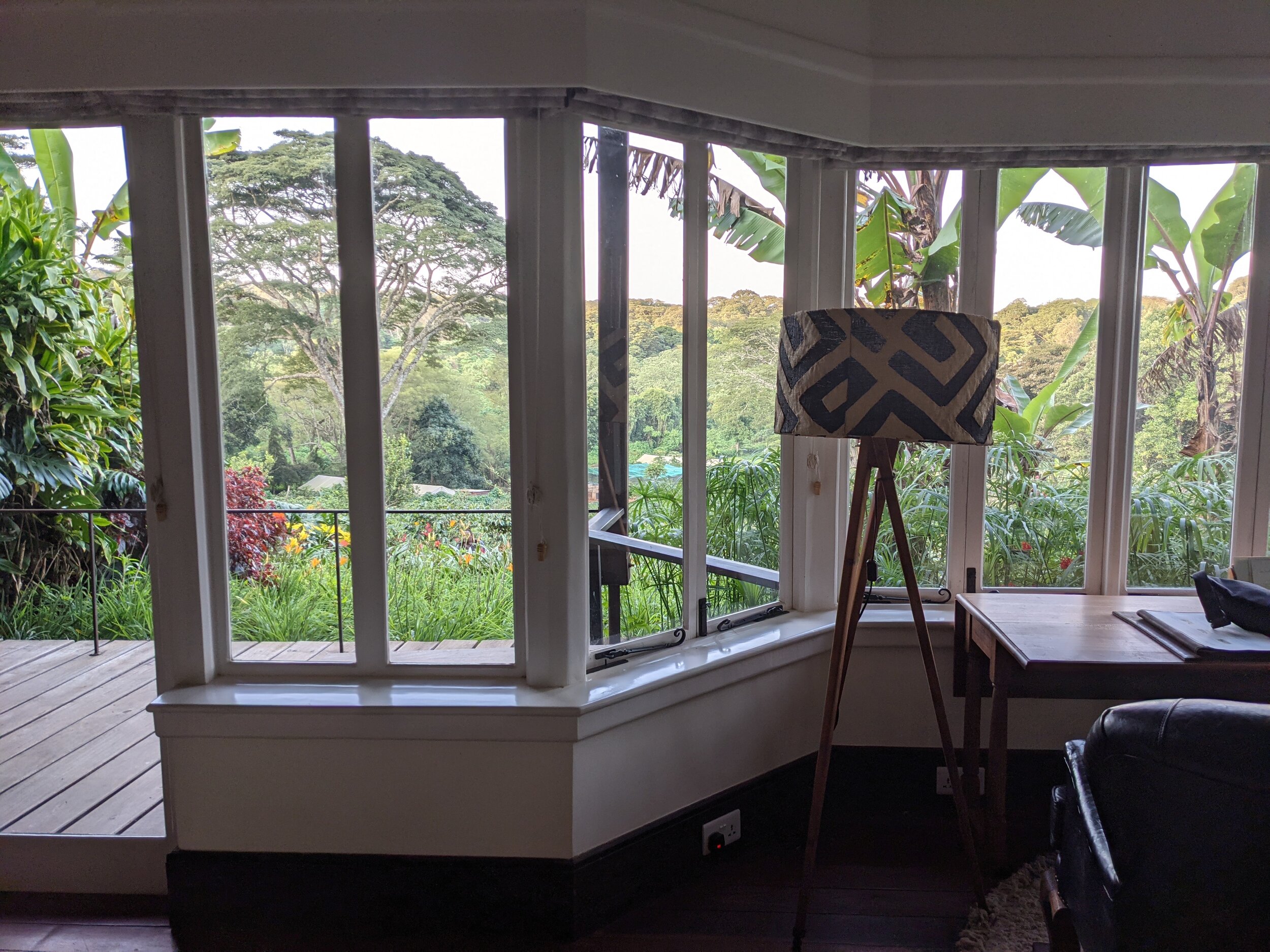
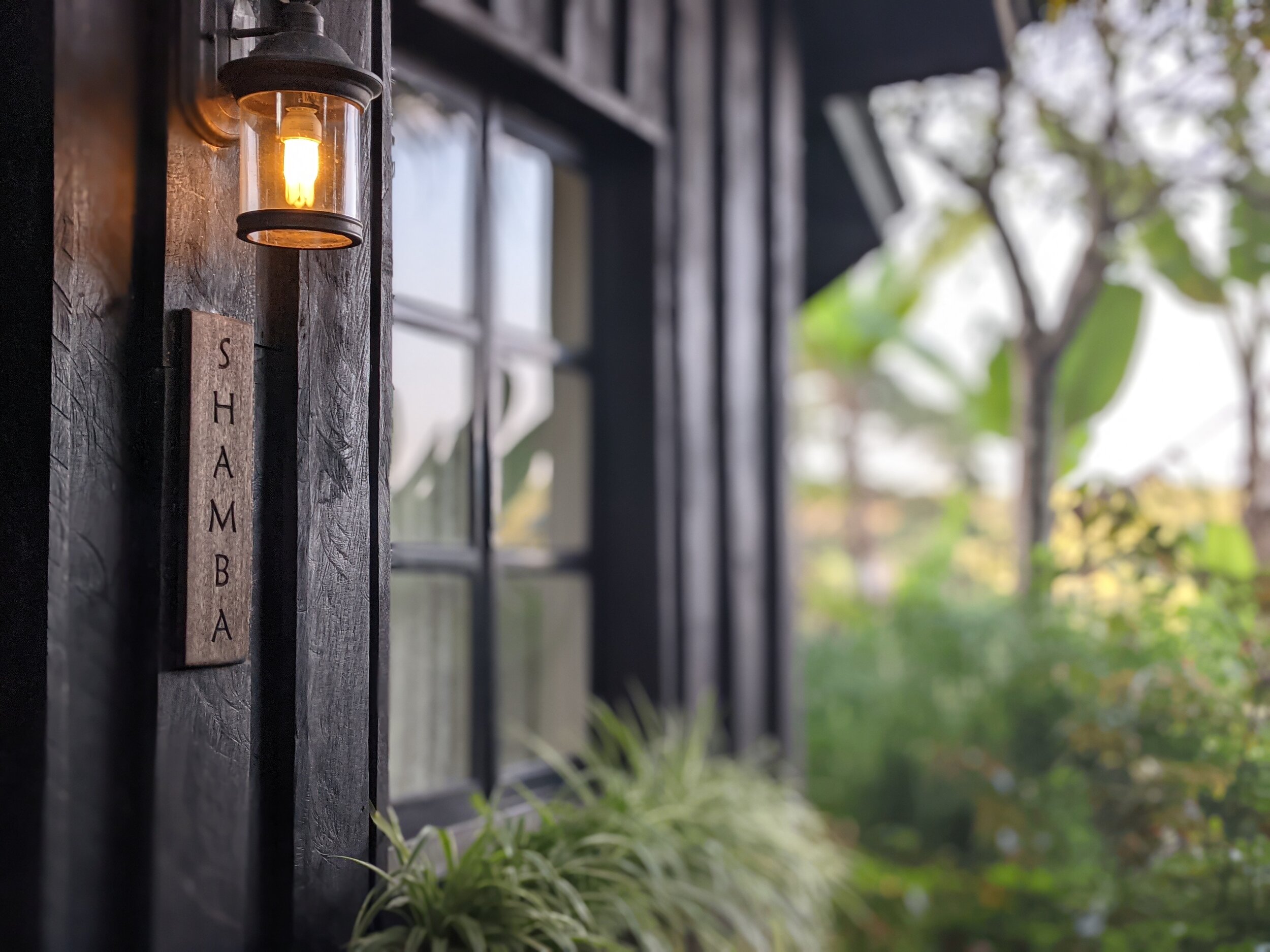
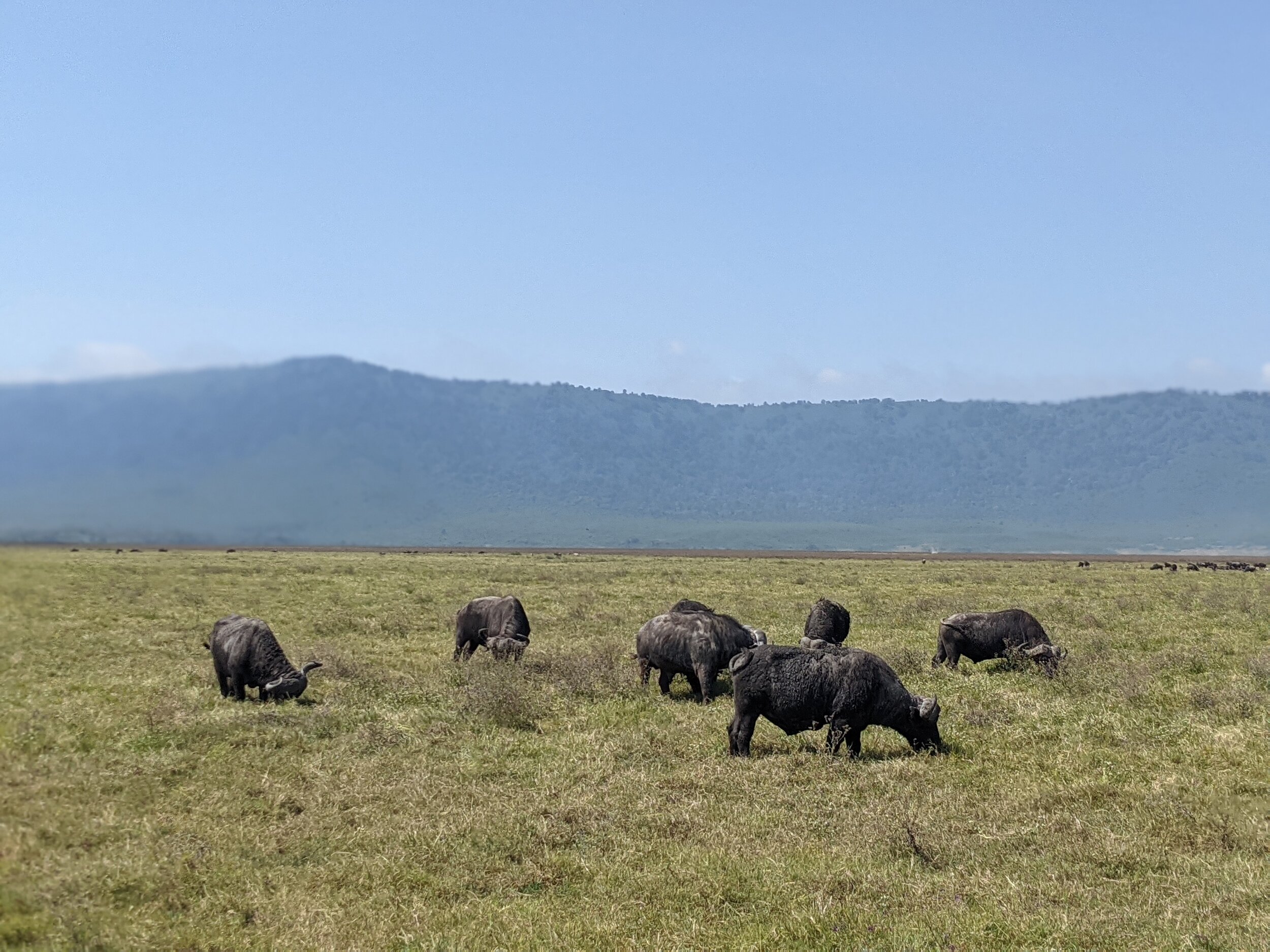
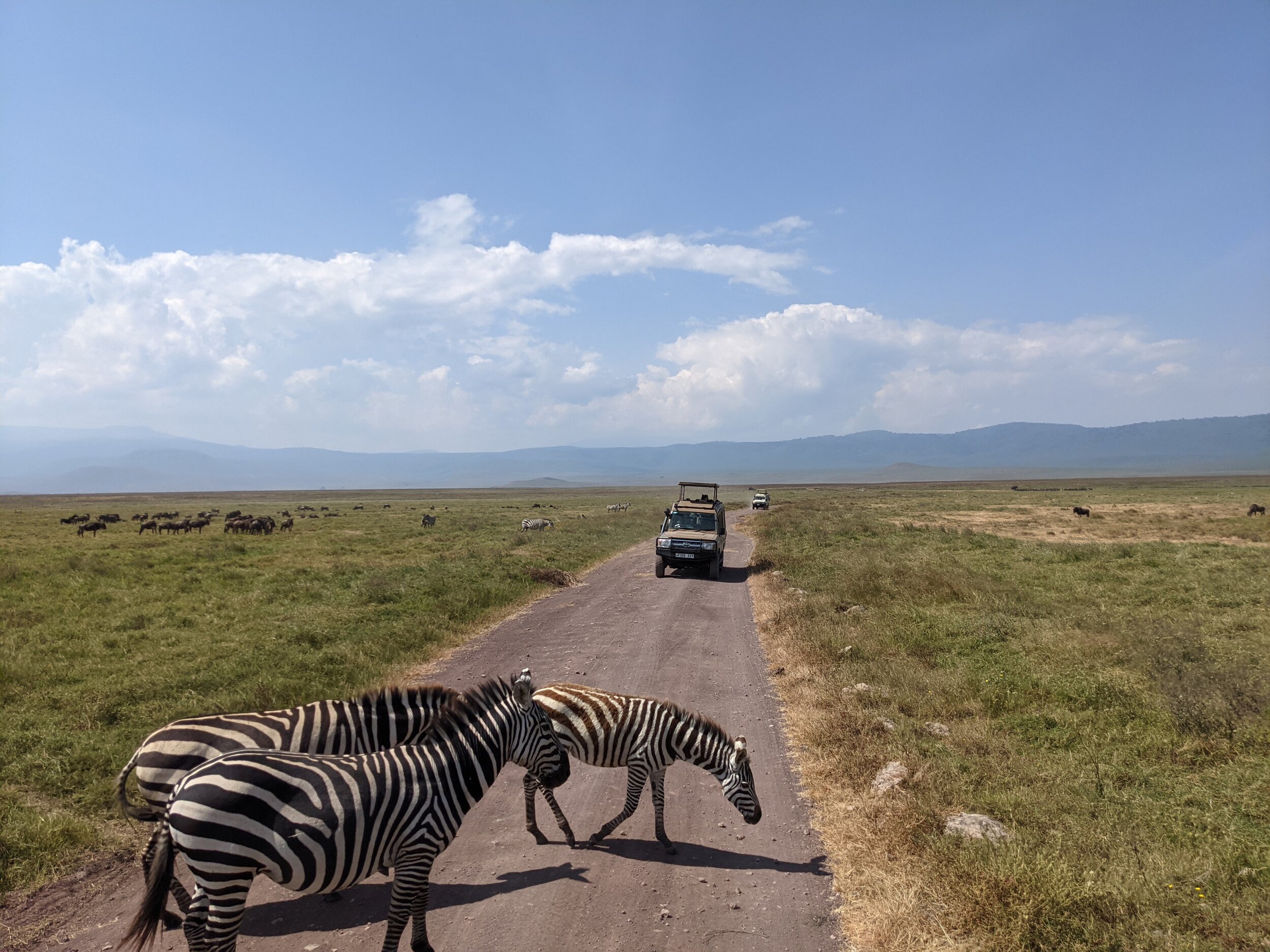
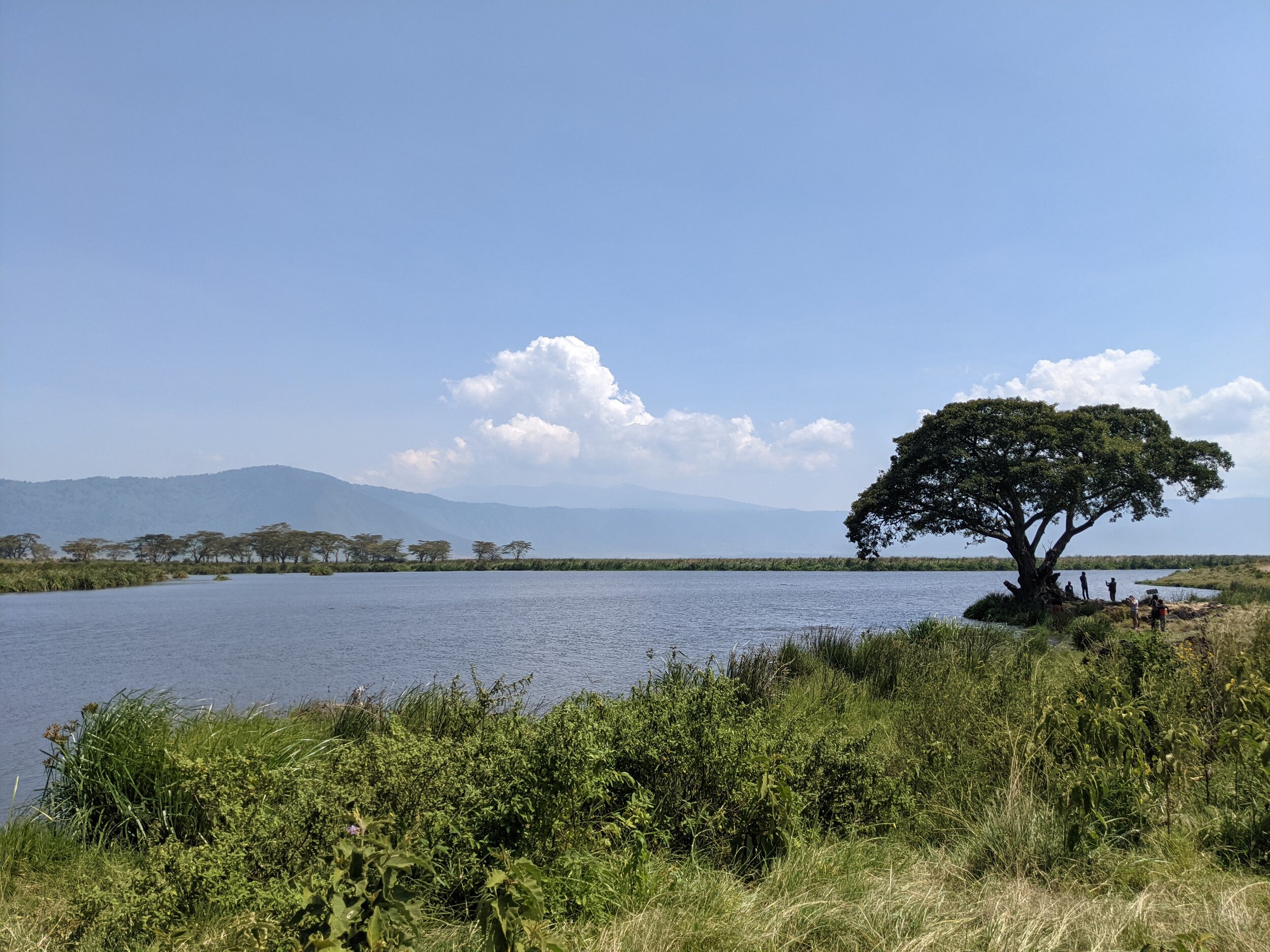
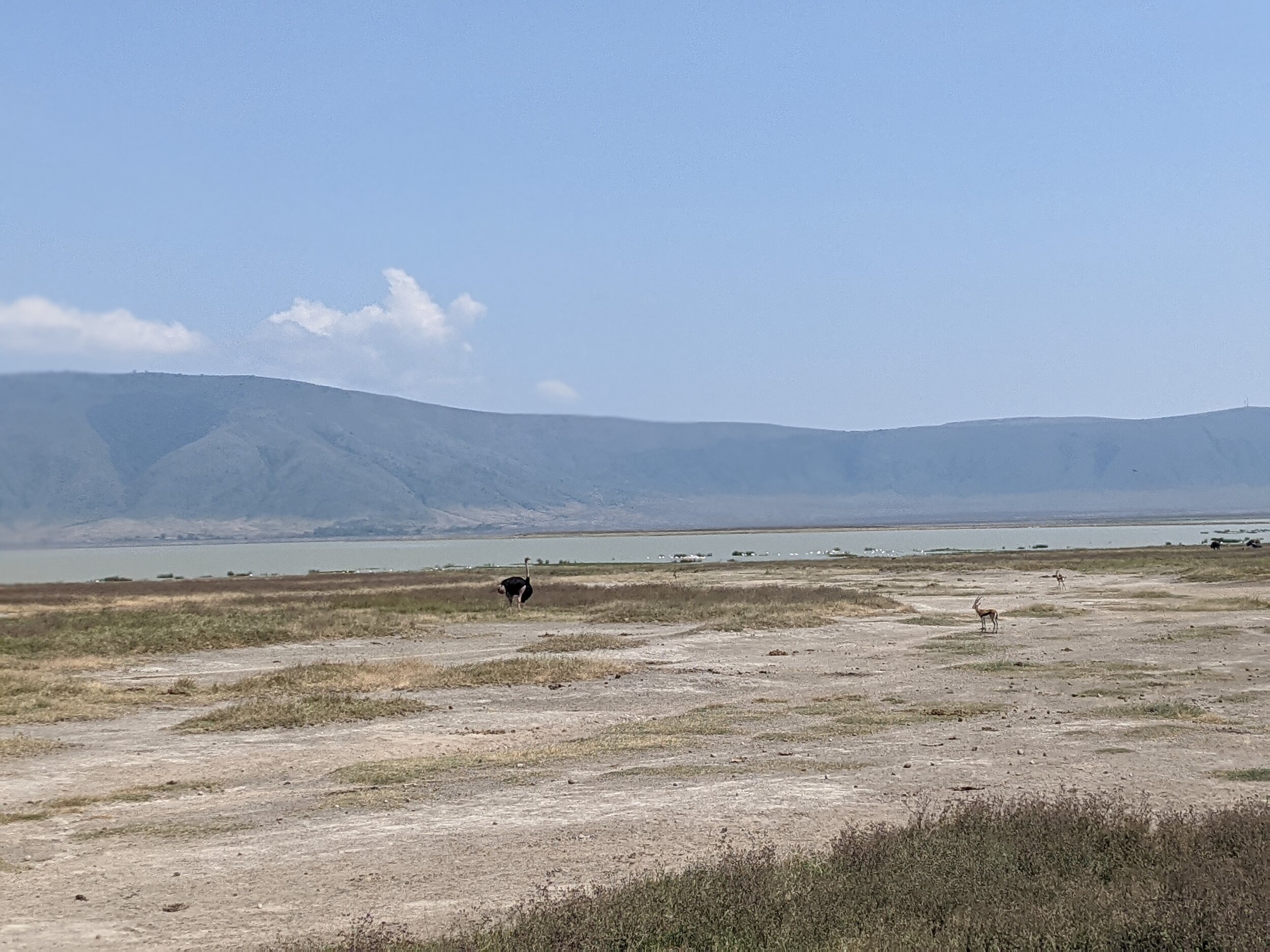
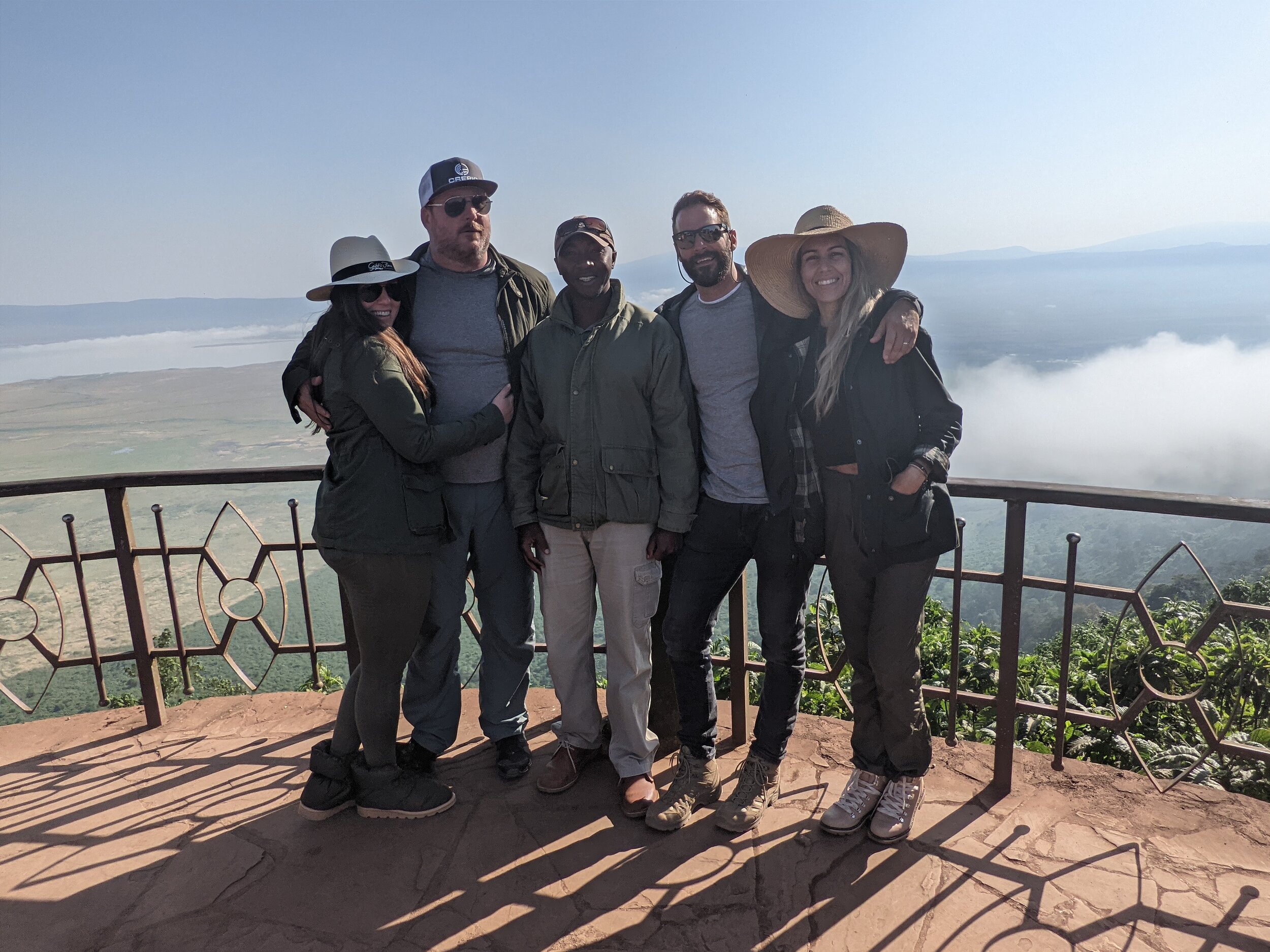
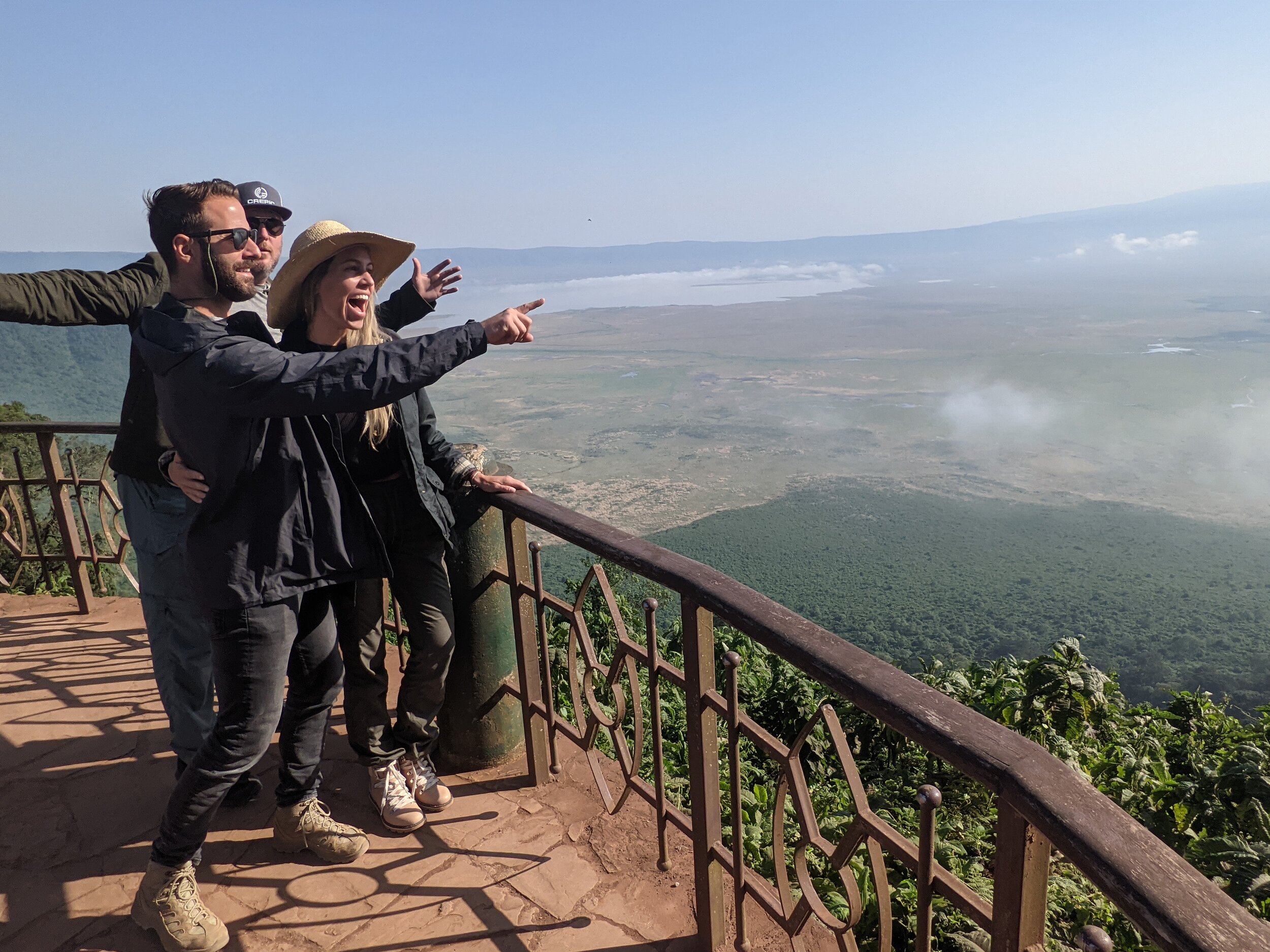
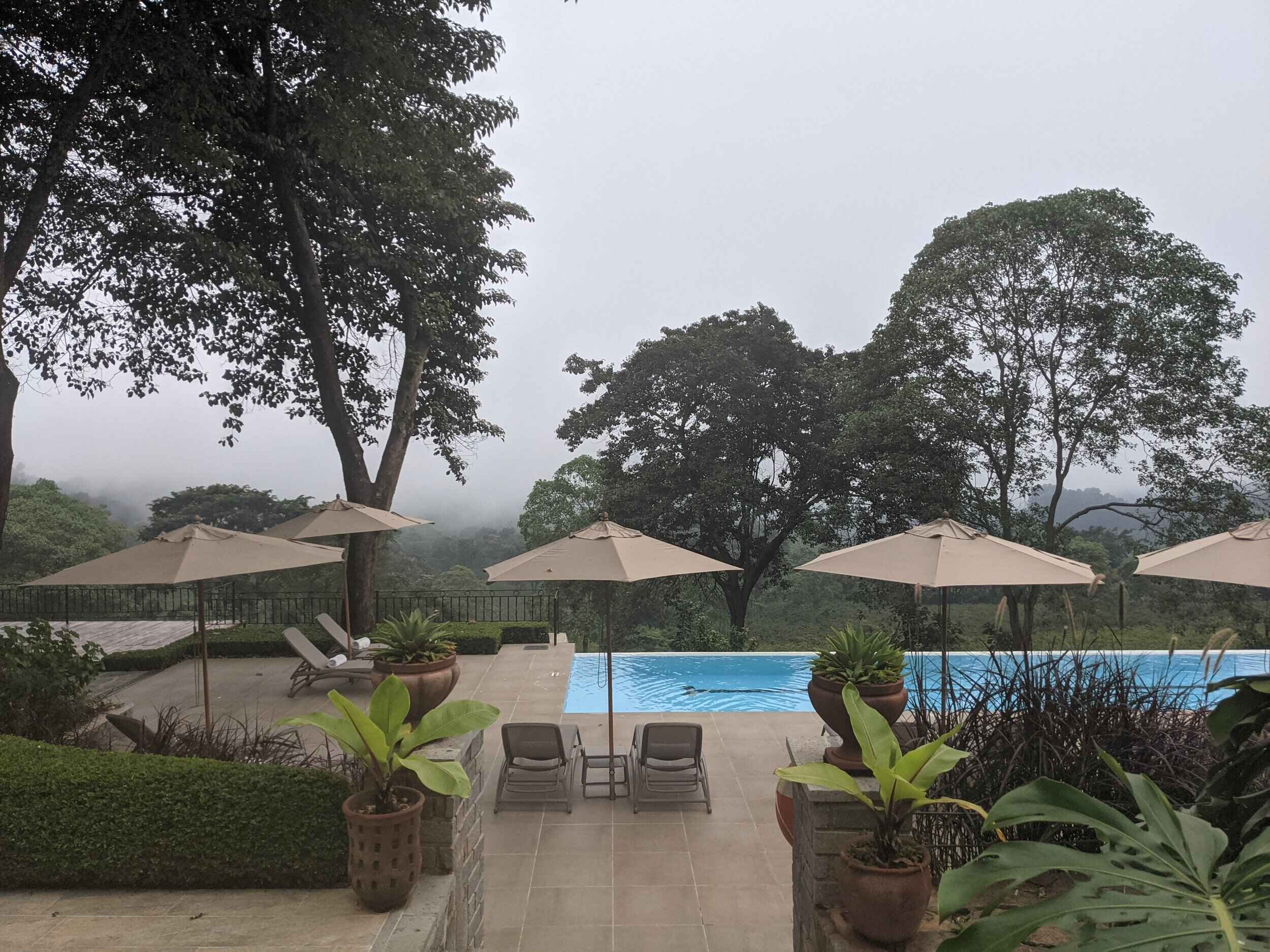

Chem Chem: A Safari Enthusiast’s Dream Come True
After our hike we left with Toti en route toward Chem Chem, a privately owned wildlife concession nestled between Lake Manyara and Tarangire national parks and about a two-hour drive from Gibb’s Farm. Chem Chem Lodge is one of three properties on the concession; Forest Chem Chem is a delightful exclusive-use property perfect for small groups and families and Little Chem Chem, directly bordering Tarangire and Lake Burunge is the quintessential armchair safari camp. Chem Chem Lodge is the most luxurious of the three, combining an authentic tented experience with the comforts provided by a fully appointed five-star lodge. Each of the eight tents overlooks Lake Manyara, ensuring an exceptionally dramatic setting for African sunsets. The common areas are cleverly designed to create multiple social and dining spaces; we never had a meal in the same place twice! We all agreed that in an extremely competitive field, Chem Chem’s food was the standout of the trip. The combination of creativity, presentation and taste was truly phenomenal. Thankfully the lodge also boasts a remarkable gym. My husband and I are those annoying Americans who love to work out when we travel and as such are quite picky about all things fitness; Chem Chem Lodge has a fully loaded CrossFit “box” (also known as a gym to those who aren’t part of the cult like we are) with top notch equipment from kettlebells to squat racks. Nearby the gym is an idyllic pool and an adorable spa with fantastic masseuses to take care of all of those knots from bumpy game drives and whatever damage you may have inflicted upon yourself doing CrossFit!
The enchantment at Chem Chem extends far beyond the lodge itself. Here you’ll find not only outstanding wildlife taking advantage of the concession’s prized location between two prominent national parks but also completely unique experiences stretching far beyond traditional game drives. On our first night we headed out on a walking safari with our naturalist guide, Emmanuel, and Sokoine, our local Maasai warrior guide. The walk alongside Lake Manyara was truly majestic during the golden hour, with wildlife like warthogs, wildebeest and flamingos abound as the sky turned a stunning hue of pink. The activity culminated in a beautiful sundowner overlooking the lake and a fire that Sokoine lit himself with brush and sticks.
The next morning we ventured back into the bush on foot, but this time jogging with Sokoine for a sunrise run. After so many game drives (and food...and drinks…!!!) it felt incredible to experience our surroundings on foot and get some exercise (Sokoine, wearing his traditional Maasai sandals, never broke a sweat at a 7:00 minute mile pace with Donald). After our run we continued walking toward an enormous Baobab tree with a giant hollow trunk large enough to house a small family. Underneath the tree we feasted upon a delicious bush breakfast before heading out for the day to visit a local Maasai king and his family. The activity is an authentic encounter, not a touristic production with song and dance that may feel forced or uncomfortable. Maasai culture is such a defining quality of much of the southern Kenyan and northern Tanzanian experience, yet often mischaracterized or simplified and visits like this are essential to better understanding the local fabric that drives this dynamic part of the world. We ended the day with a night drive through the concession, a thrilling activity only available on privately managed reserves.
Though it was a hard decision to make, as a group we decided that Chem Chem probably inched out on top as our favorite stop. It’s simply magical with no detail spared and a wonderful complement to big game safari destinations like the Masai Mara and the Serengeti. Chem Chem works well for everyone: honeymooners, families, groups of friends...you name it! Each of the three properties on the concession have a unique style catering to all types of travelers. I cannot recommend Chem Chem enough.




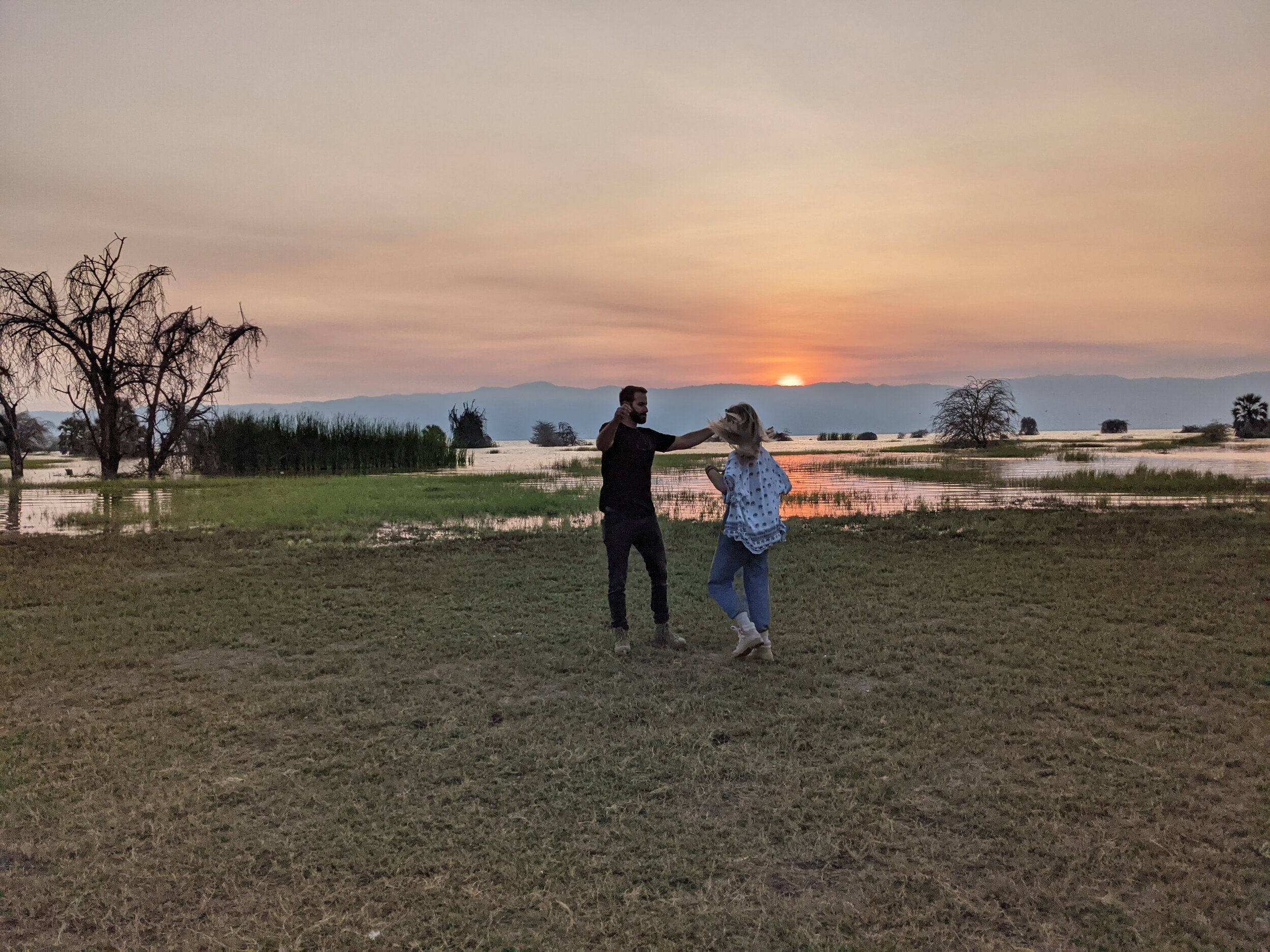
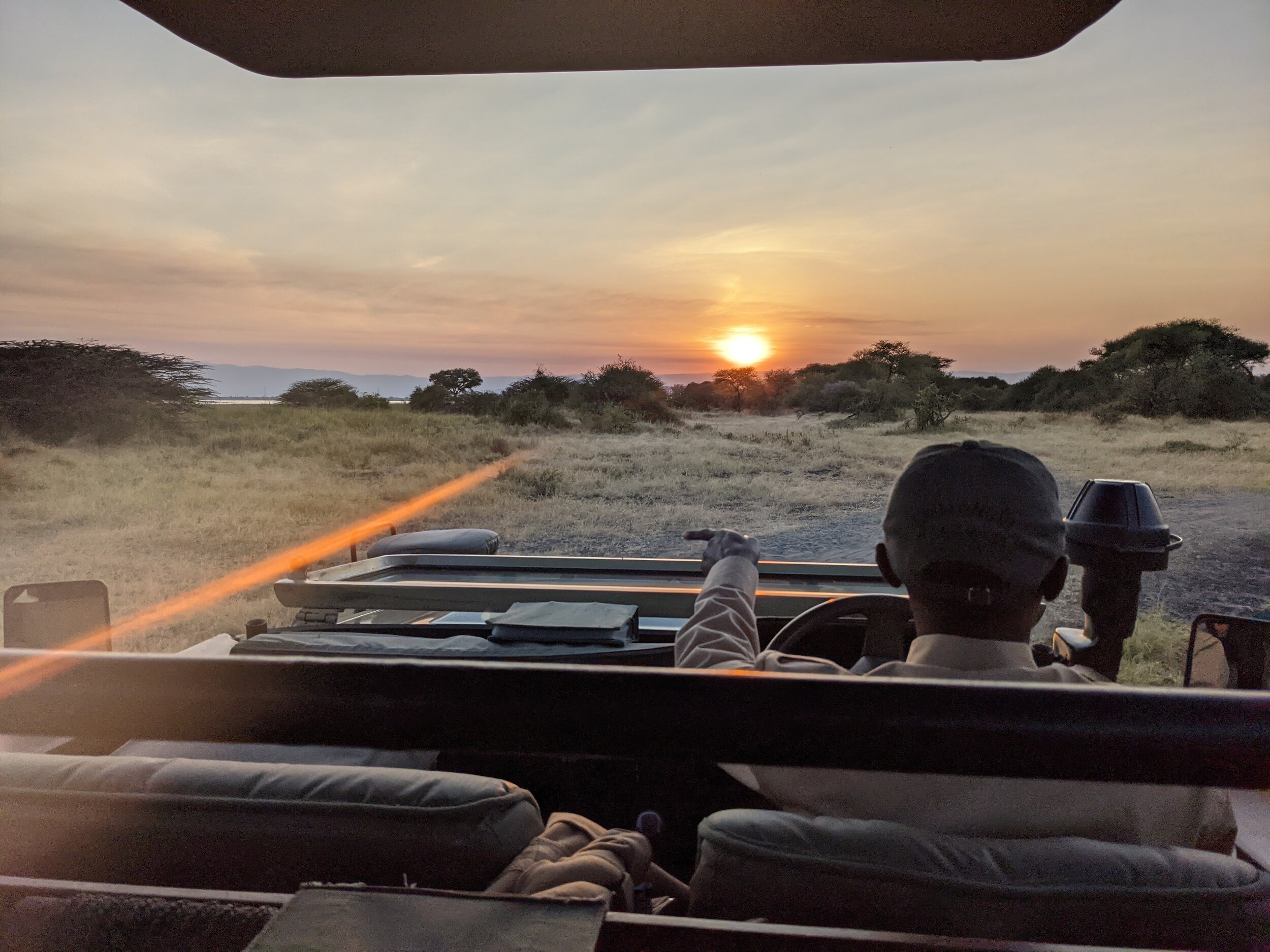
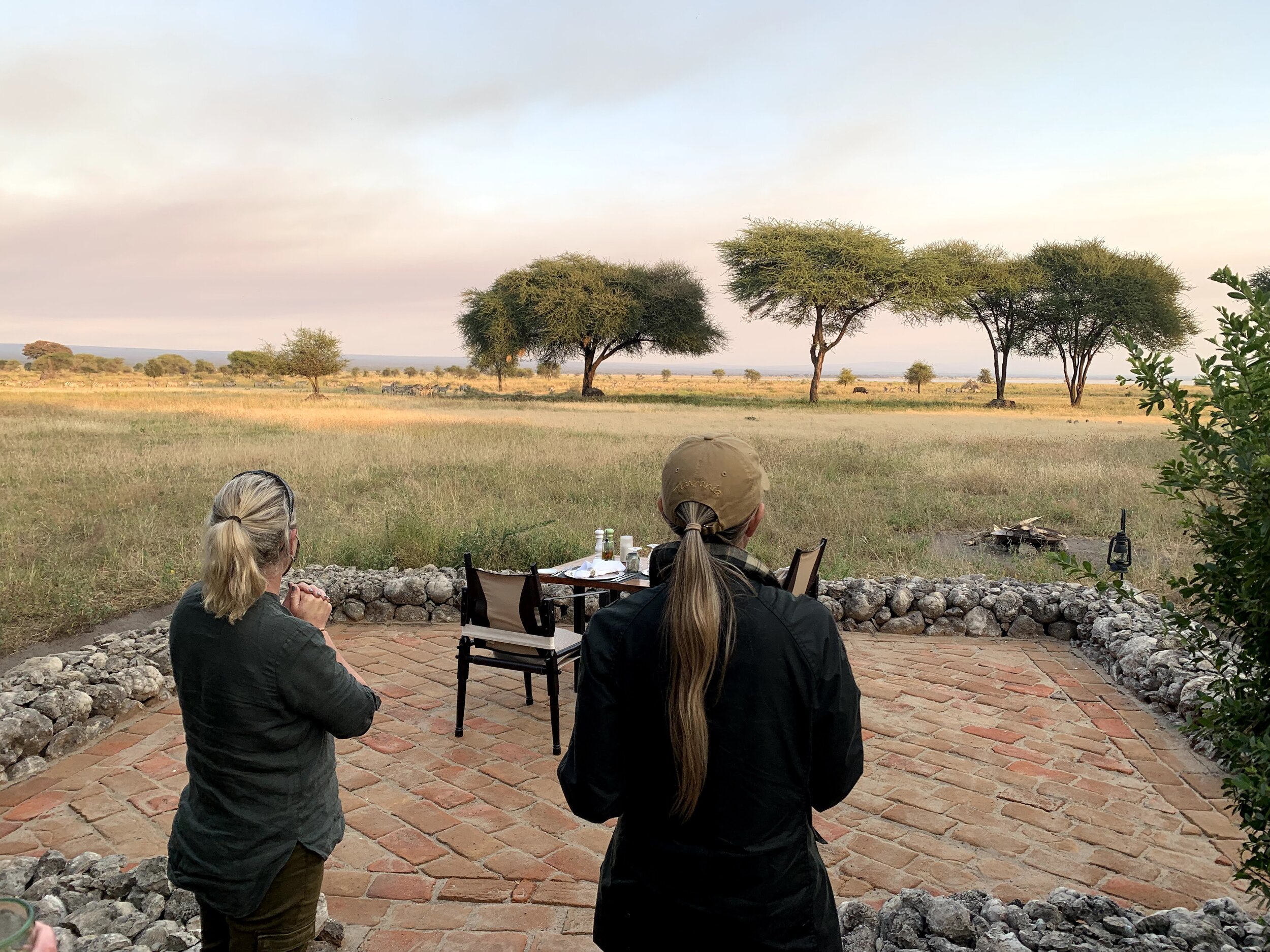
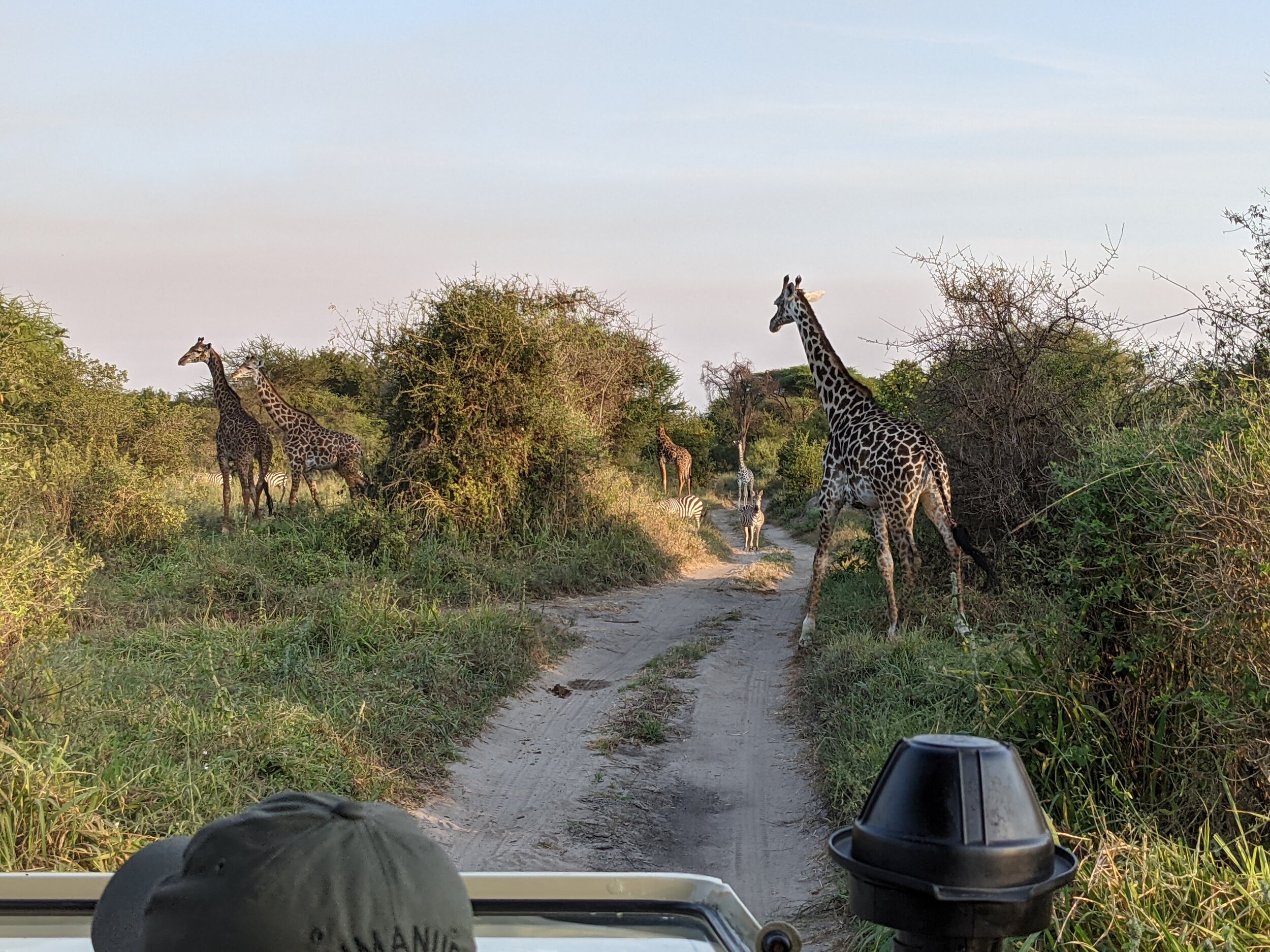
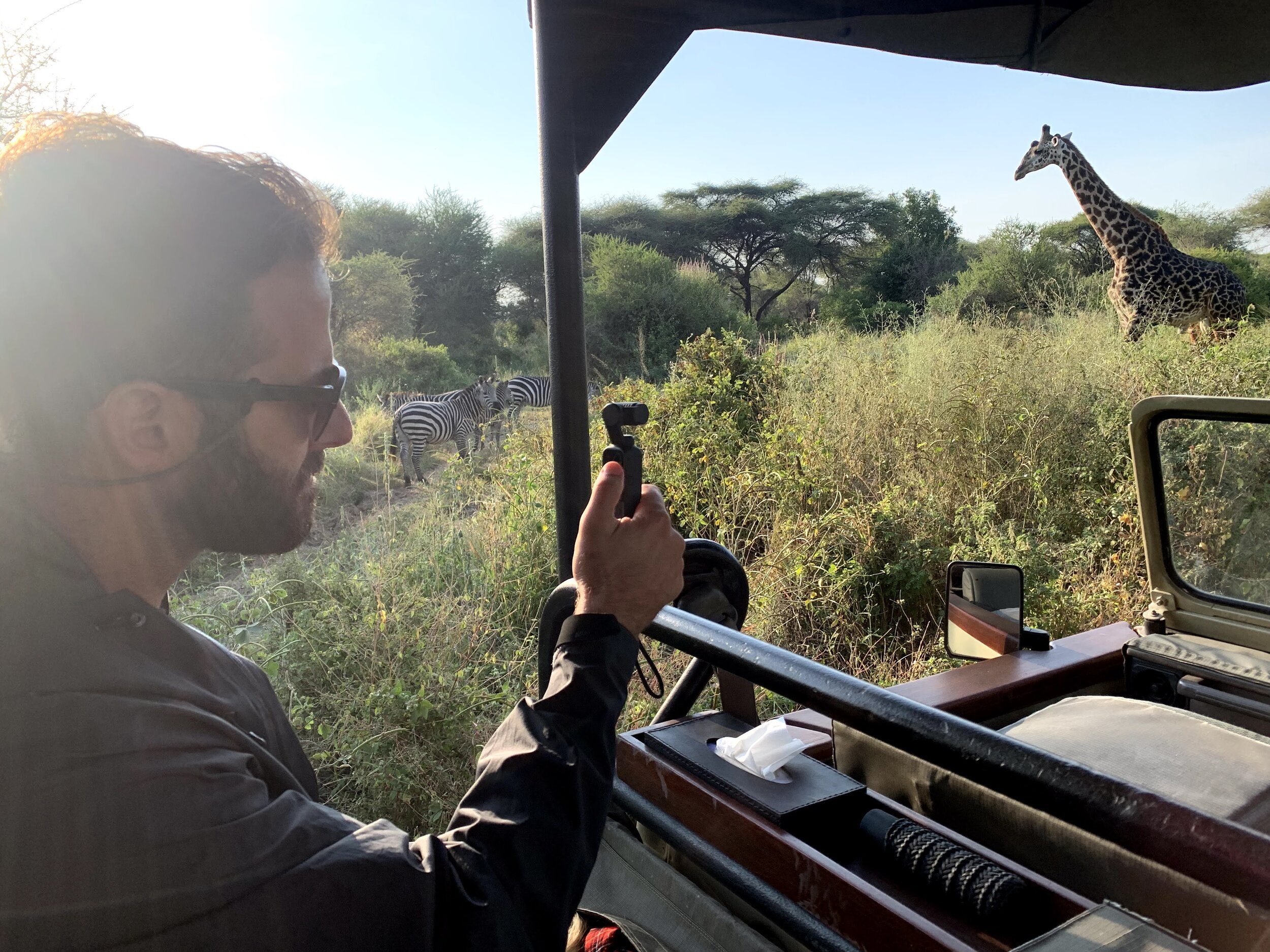



Serengeti: Epicenter of the Great Migration
Our final stop as a group was Serengeti National Park, flying about one hour from Lake Manyara to Kogatende. Upon arrival our guide Isack was waiting for us to bring us to Legendary Migrational Camps. Legendary runs two seasonal camps, both of which switch locations from northern to southern Serengeti based on the wildebeest migrational path. We used their Songa camp as our base in Northern Serengeti to explore a great deal of the national park. Songa is perhaps the nicest seasonal camp I’ve ever visited; each of the eight tents is oozing with understated luxury, offering the same level of comfort you’d expect from a luxurious permanent facility. The camp’s unadulterated wilderness is intoxicating for outdoor enthusiasts. We heard lions and hyenas just outside our tent at night and eagerly sat in bed listening to their every move (knowing the armed guards outside would surely protect us from threatening encounters!). The food at Songa, far lighter fare than what we had been consuming earlier in the trip, was exceptional. It’s hard to imagine how such delicious cuisine can be produced in such a remote and low-impact setup but the chef and his team delivered unforgettable dining experiences throughout our stay.
Legendary is a great safari outfitter for several reasons: beyond the excellence in their lodging as described above (and the same goes for Legendary Lodge in Arusha, a favorite for those overnighting before or after international flights), Legendary is all about the guiding. They are in fact legendary for their guides, known to be some of the best in Tanzania after years of experience and highly intensive training programs. Legendary also guarantees private vehicles at their camps, meaning that you are fully in charge of your safari schedule, the types of animals you’d like to focus on, how long you’d like to stay at a particular sighting, etc. This is a true luxury that is not often included, even at some of the most deluxe camps, so definitely a considerable value-add that Legendary is offering.
With that in mind, superstar Isack planned our game drives around our stated desire of finding the Great Migration, currently making its way north from the western part of the national park. The Great Migration is the world’s largest animal migration, with over two million wildebeest and zebra moving clockwise between Tanzania and Kenya across the Mara River in search of water. Contrary to misconception of many, the migration never stops and occurs year round, though it’s in the dry season months of June through October where you are most likely to witness the dramatic scenes of thousands of wildebeest simultaneously crossing the treacherous Mara River, hoping to avoid death by crocodile or drowning. While the annual path itself largely stays the same, exact timing can be unpredictable. This year for example the herds were somewhat delayed in the south by heavier rains in March and April. As we drove southwest, we eventually found thousands of wildebeest and zebra, the “pioneers” of the herds en route toward the Mara River. The sight was utterly remarkable and yet represented only a fraction of the herds that would ultimately crowd the plains in this region in the weeks ahead.
Independent of the migration, the Serengeti boasts some of Africa’s best big game. We saw just about everything during our drives, though the most memorable moment was perhaps encountering a lion pride with cubs who, thanks to the pandemic, were clearly not used to seeing many humans. Observing the younger lions as they intently watched us was fascinating (the mature lionesses were far less interested in our vehicle and despite their cubs’ stirring did not get up from their naps). We sat with them for nearly an hour without seeing anyone else. I really couldn’t believe how few vehicles we encountered in the Serengeti and at times it felt as if we were in a private concession. Isack was the consummate guide, skillfully and consistently encountering wildlife throughout hundreds of square miles without the help of any radio or other rangers.
The splendor of the Serengeti was a perfect ending to our fairytale adventure, or at least mine and my husband’s; while we headed home to resume parental duties, our friends jetted off to nearby Zanzibar for a proper romantic honeymoon. Serengeti is really the quintessential safari destination and schedule-permitting should be allocated at least 4-5 nights for proper exploration. I love the idea of combining migrational camps like Legendary’s Songa with a property in the Central Serengeti to ensure you cover all of your wildlife bases. The Serengeti can be visited year-round and each season provides a unique opportunity to experience something different. From July to October you can catch the iconic river crossings of the migration and from January to early March you’ll encounter babies galore as the wildebeest and zebra begin their calving season on the park’s southern plains.
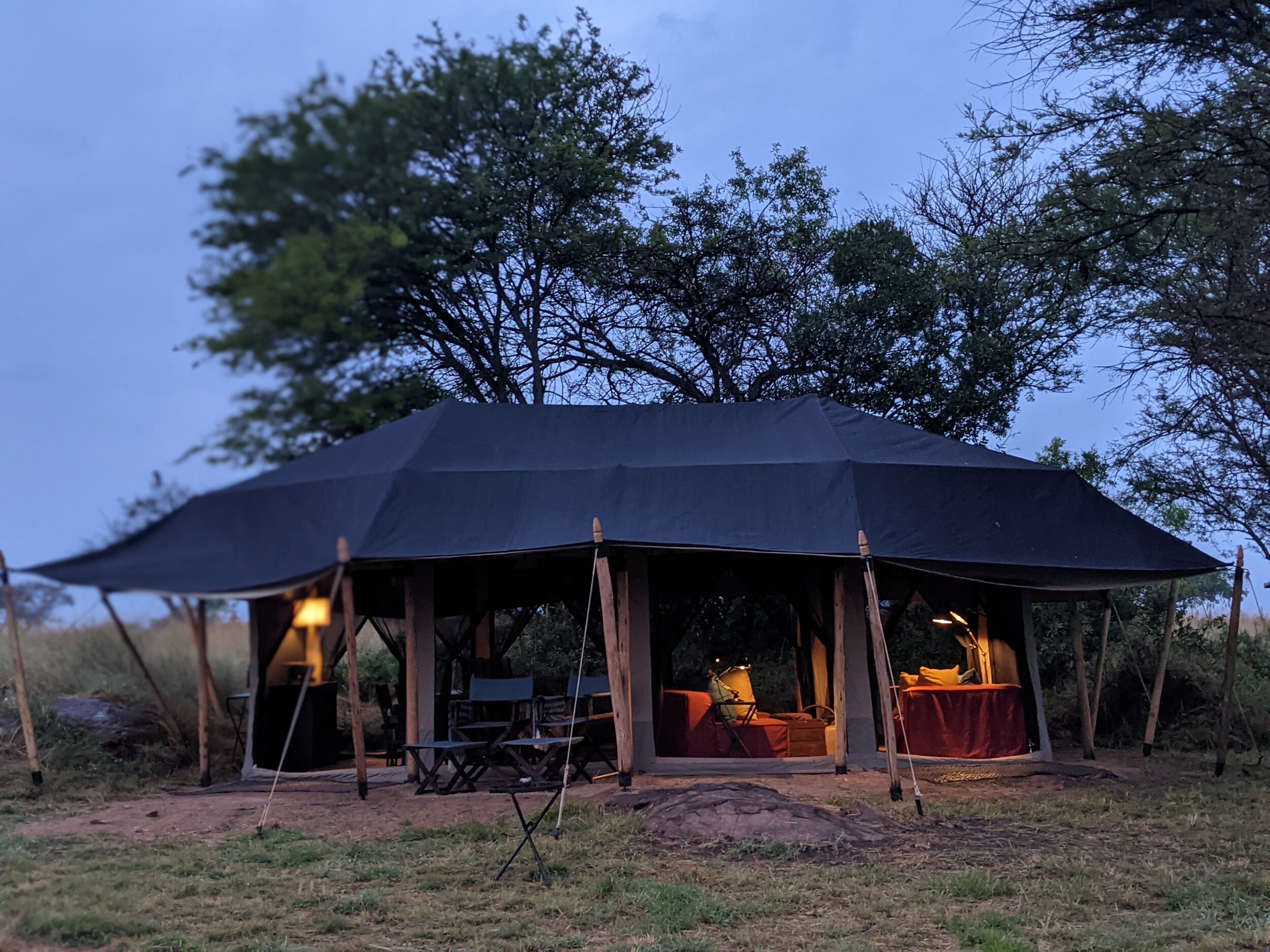

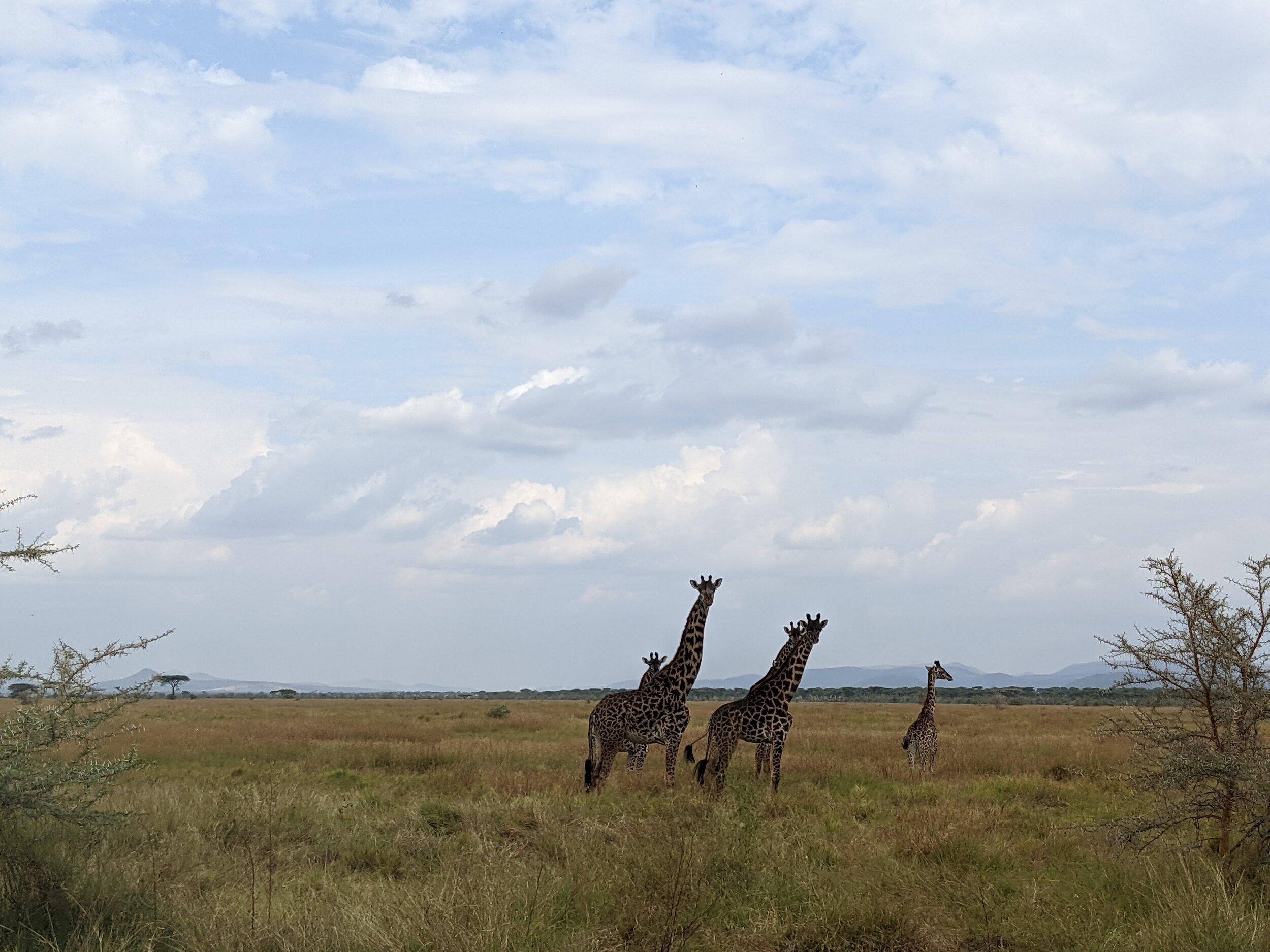


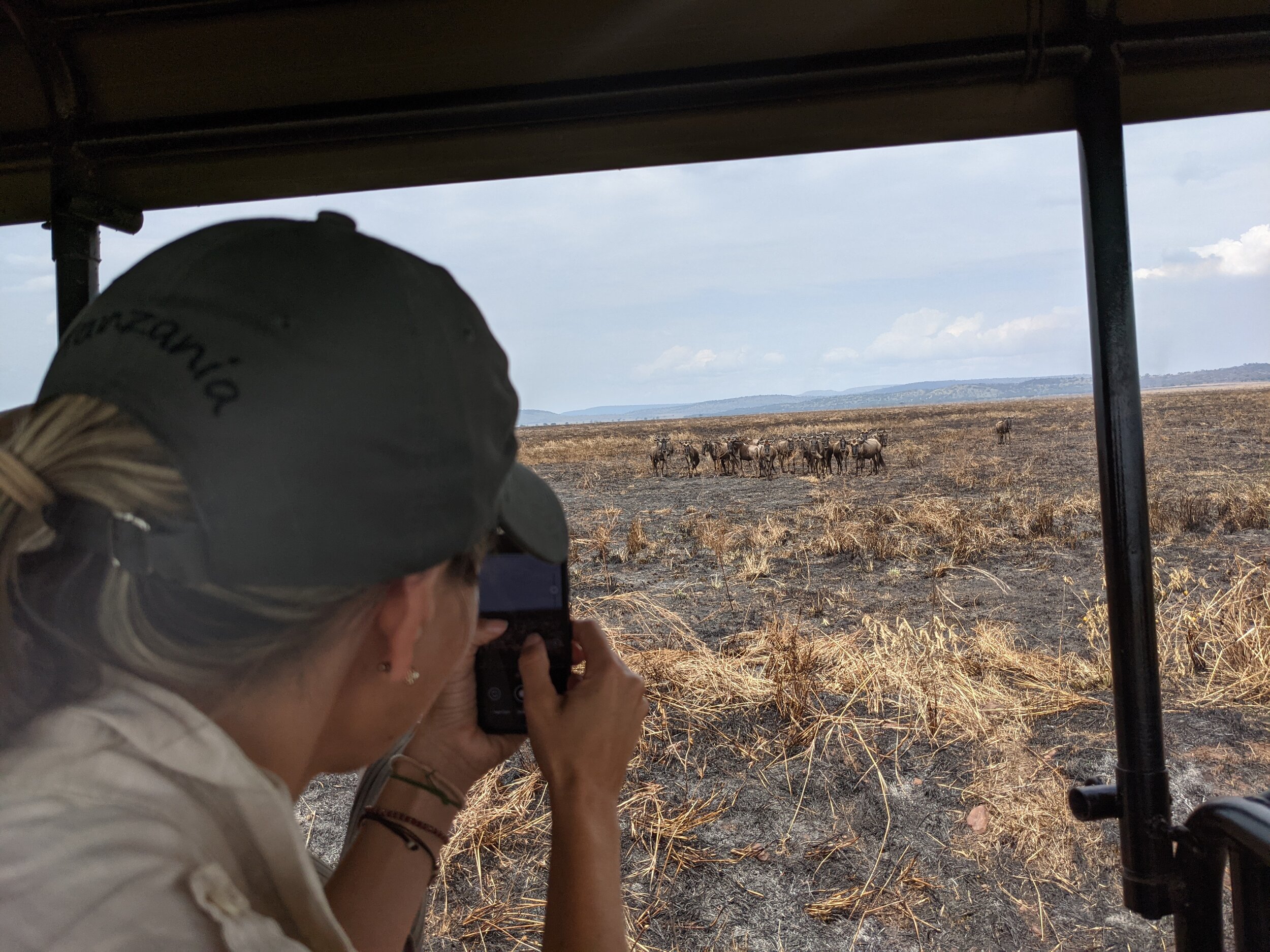

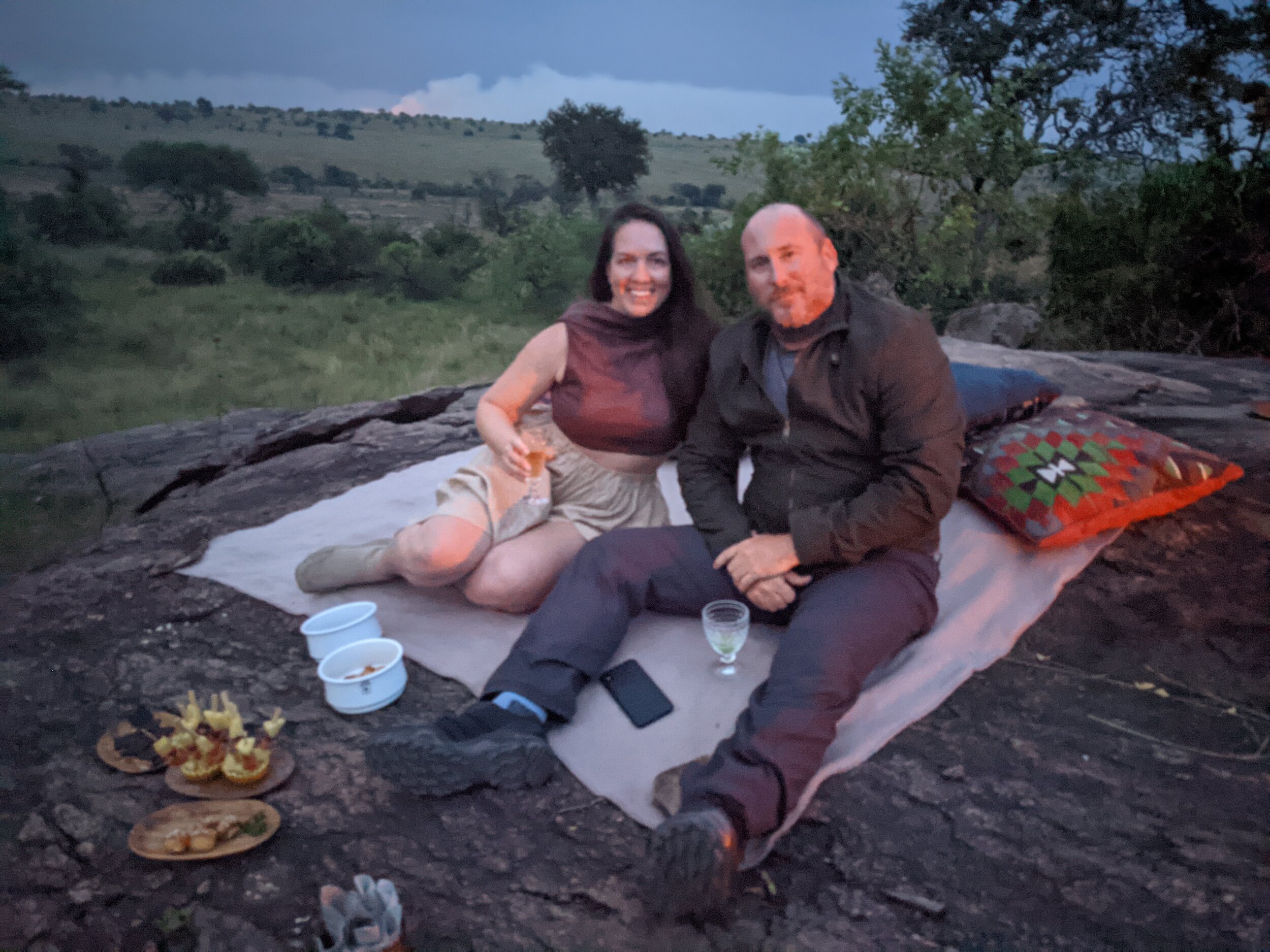


Overview of Our Kenya and Tanzania Safari During COVID-19
Our entire itinerary works well year-round: the drier months during the height of the migration offer prime game sighting conditions with peak pricing while November through March boasts beautiful lush scenery, the births of various species and the benefit of both lower green season rates and generally fewer crowds. April through mid May can be a bit wet as the longer rains arrive, but by mid May things start to dry up and prices remain comparatively quite low.
Though our trip was quite similar to Craft’s Deluxe East Africa itinerary, below you can see our slightly modified layout:
1 night Hemingways (Nairobi)
2 nights Elewana Loisaba Tented Camp (Laikipia)
3 nights Angama Mara (Masai Mara)
2 nights Gibb’s Farm (Ngorongoro Highlands)
3 nights Chem Chem Lodge (Tarangire/Lake Manyara)
3 nights Legendary Migration Camps (one of two seasonal Serengeti camps in four locations operating in accordance with the wildebeest migration’s positioning)
I think it’s also important to note that in addition to providing the top safari experiences on the market, each of these camps or lodges is highly committed to making a positive impact in their regions. This has always been a highly determining factor in our relationships with local partners but after the pandemic, supporting companies with a vision for a better world is in our view now simply essential. Despite thus far being spared the worst of COVID-19’s medical outcomes, East Africa’s economy, largely driven by international tourism, has been severely impacted. The consequences of this hardship are suffered not only by local communities but also by wildlife conservation, forced to deal with increased vulnerability to poaching. By visiting each of these places you are supporting both individuals whose livelihoods depend on tourism and animal populations who without conservation efforts may be at high risk.
To give a few examples:
The Angama Foundation, funded in part by guests as part of the nightly rate, is focused on three specific fields of work: conservation, education and healthcare. In 2020 the foundation launched a scholarship program of which 400 young local students were the recipients.
The Chem Chem Association has done wonders for reversing the decimation of various species on their concession, promoting human-wildlife conflict resolution and establishing research projects to monitor mammal groups.
Legendary’s Friedkin Conservation Fund (FCF) was established to conserve two million acres of Tanzania's protected areas and is actively involved in supporting conservation and community development in Tanzania, working closely with the Wildlife Division of Tanzania and supporting the FCF primary focus on anti-poaching operations and innovative community development projects.
Knowing that our stays in each camp might do something to contribute to the people, wildlife and land of this truly magnificent part of the world made our trip that much more enjoyable.
If you’ve made it this far (!), thank you for sharing your time to relive this amazing experience and unforgettable return to travel. If you are thinking about a similar adventure for either now or in the future, please don’t hesitate to reach out to me directly. As my husband will tell you, there is nothing in the world that I love more than talking about Africa. :)

